









Il momento migliore per visitare La Spezia è la tarda primavera, o l'inizio dell'estate. Il capoluogo ligure, pur con la sua bellissima passeggiata Morin, e il molo che da bambina, stringendo la mano di mio padre, chiamavo “la strada nell'acqua”, pur coi suoi battelli, la barche e i panorami mozzafiato di un golfo perfetto; malgrado o grazie a tutto questo, non è una città di mare nel senso classico del termine. Il mare è da conquistarsi, coi battelli o coi pullman: gli spezzini lo sanno e ormai hanno fatto l'abitudine a vivere in una città di riviera, dove le spiagge non ci sono. Forse il fascino di questa città sta anche nel suo essere così “diversa” : quasi una fata Morgana che si rivela solo se vuole e a chi la vuol scoprire. Per questo quando, con l'avvicinarsi del solstizio d'estate, le ore di sole aumentano (e in ciò, La Spezia è veramente generosa, come tutta la Liguria, del resto), e la voglia di uscire anche, e di scoprire nuove cose e nuove idee, è giunta la stagione ideale per concedersi qualche giorno di vacanza nel Golfo dei Poeti. Senza disdegnare la passeggiata Morin con le sue palme e gli attracchi per i traghetti (che effettuano rotte giornaliere verso Portovenere, la Palmaria e le Cinque Terre), il ponte Revel che vi porta dritti fino al Porto Mirabello (luogo di turismo elegante per proprietari di barche, con piscina aperta a tutti, negozi e locali chic), La Spezia merita di essere visitata con percorsi alternativi, partendo dai colli che incorniciano la città e permettono visioni mozzafiato sulla costa sottostante. Percorrendo via del Prione, caruggio battutissimo da cittadini e turisti, che vi arrivano direttamente dalla stazione centrale, potete, svoltando verso il Poggio (uno dei quartieri più antichi, nucleo storico della città), prendere un comodissimo ascensore che, in due fermate, quasi una teleferica, vi fa arrivare nella parte alta della Spezia, luogo di ville e palazzi liberty, tra cui la sede dell'Accademia Capellini e quella del Conservatorio musicale; e potete visitare l'antico castello San Giorgio, che oggi ospita il museo etnografico, dove ammirare le misteriose statue stele della vicina Lunigiana. Affacciarsi dalla terrazza del Castello (consultate gli orari di apertura) è, nelle giornate di sole, un'esperienza unica, che consente, nella quiete irreale che vi regna, di ammirare quasi per intero La Spezia e il suo golfo: di scoprire una città armonica e perfettamente inserita nella sua geografia privilegiata fra monti e mare, una città che non ci si aspetta, che sorprende e stupisce.
Per scendere nuovamente nel centro storico, pieno di bei negozi e locali, per tutti i gusti e ogni esigenza, potete andare a piedi da una delle tante scalinate, che vi permettono di raggiungere via Prione o piazza Verdi: quest'ultima vi stupirà coi famosi archi di Buren, inaugurati tre anni fa tra non poche polemiche, che videro coinvolto anche il critico d' arte Vittorio Sgarbi, grande ammiratore e frequentatore del capoluogo ligure.
Noi, con la nostra rivista, contribuiamo a darvi qualche consiglio su come vivere al meglio la Spezia e i suoi dintorni. Sperando di essere una compagnia discreta e utile.
Buona vacanza, dunque, e buon soggiorno nel Golfo dei Poeti!

Gabriella Mignani
Direttore responsabile
Anno IX ∙ Nr. 51 ∙ Gennaio/Febbraio 2021 www.italiapervoi.eu
EDITORE:
ITALIA PER VOI S.r.l. italiapervoi@legpec.it
Aut. Trib. SP nr. 1740/19
Iscrizione ROC: N° 22857
DIRETTORE RESPONSABILE: Gabriella Mignani
GRAFICA E IMPAGINAZIONE:
Italia Per Voi S.r.l.
COLLABORAZIONE PER I TESTI: Samira e Gino Giorgetti, Leonardo Merlini
CONTRIBUTI FOTOGRAFICI, CARTOGRAFIA E MAPPE:
Italia Per Voi S.r.l., Sara Mulliri, La Maggiorana Persa di F. Vassallo, Le Cinque Erbe di Daniela Vettori, Comune di La Spezia, Enrico Amici, Alice Borghini, Trattoria Al Negrao, S. Scialpi, Chef Antonella Cargiolli.
REDAZIONE E PUBBLICITÀ: Via Vittorio Veneto 255 - 19124 - La Spezia Mob. +39 333.8485291 ∙ italiapervoi@gmail.com
L'uso del nostro sito o della nostra rivista digitale è soggetta ai seguenti termini: Tutti i diritti sono riservati. Nessuna parte di www.italiapervoi.eu può essere riprodotta, memorizzata in un sistema di recupero o trasmessa, in qualsiasi forma o con qualsiasi mezzo, elettronica, meccanica, fotocopia, registrazione o altro, senza previa autorizzazione scritta da parte di Italia per Voi s.r.l. Nonostante l'accurata verifica delle informazioni contenute in questo numero, Italia per Voi s.r.l. non può accettare responsabilità per errori od omissioni. Le opinioni espresse dai contributori non sono necessariamente quelle di Italia per Voi s.r.l. Salvo diversa indicazione il copyright del contributo individuale è quello dei contributori. E' stato fatto ogni sforzo per rintracciare i titolari di copyright delle immagini, laddove non scattate dai nostro fotografi. Ci scusiamo in anticipo per eventuali omissioni e saremo lieti di inserire l'eventuale specifica in ogni pubblicazione successiva.
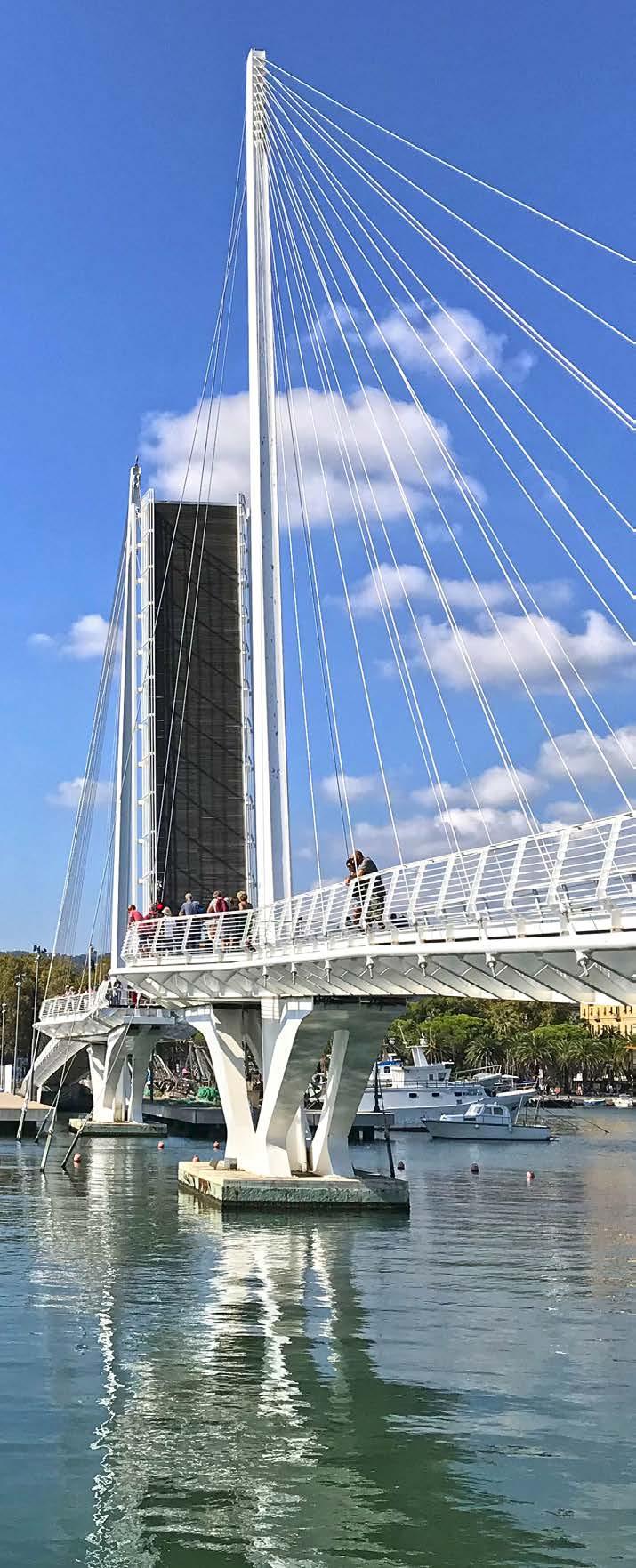


e Pieghevoli
Il nostro Studio Grafico propone: creazione di Biglietti da Visita, Volantini, Pieghevoli e Cataloghi, Loghi, Calendari personalizzati, Planning, Mappe e Cartografia
Calendari personalizzati / Mappe


Ci occupiamo di Social Marketing per la creazione di post personalizzati e campagne sia sulle nostre pagine/accounts che su quelle dei clienti
+39 333 8485291 (Maria Grazia)
+39 331 3341093











How to move about


Places of Interest

The Surroundings


The cusine

Tourism and Events

A bit of History

The Gulf og Poets



















































































































Conad City
LA SPEZIA - Piazza Matteotti 5
Arrigoni
LA SPEZIA - Via Sarzana 224
Ristorante della Baia
LE GRAZIE, PORTOVENERE Via Lungomare 111
Antica Osteria del Carugio
PORTOVENERE - Via Capellini 66
Il Timone Ristorante
PORTOVENERE - Via Olivo 29
Conad City
LERICI - Via Petriccioli 10
LERICI - Piazza Valtriani 1
Hotel del Golfo
LERICI - Via Gerini 37
Torre Aurora
MONTEROSSO AL MARE
Via del Bastione 5
PestoLab Baico
MONTEROSSO AL MARE - Via Roma 35
La Terrazza del
Porto Roca
MONTEROSSO AL MARE - Via Corone 1
Park Hotel Argento
LEVANTO - Via Sant'Anna s.n.
Hospitality
Residence Italia
LUNI MARE - Via Gramsci 3
Hotel della Baia
LE GRAZIE, PORTOVENERE Via Lungomare 111
Hotel del Golfo
LERICI - Via Gerini 37
Hotel Ristorante
Porto Roca
MONTEROSSO AL MARE - Via Corone 1
Park Hotel Argento
LEVANTO - Via Sant'Anna s.n.
Poppy Bijoux
LA SPEZIA - Corso Cavour 40 - 58
Farmacia Ghigliazza
SAN TERENZO DI LERICI
Via P. Mantegazza, 8/A
Migliorini Immobiliare
LERICI - Via Roma 37
Fabbrica d'Arte
MONTEROSSO AL MARE
Via Roma 9 - Via V. Emanuele 27
Park Hotel Argento
LEVANTO - Via Sant'Anna s.n.
occupiamo
Social Marketing per la creazione di post personalizzati e campagne sia sulle nostre pagine e accounts che su quelle dei clienti


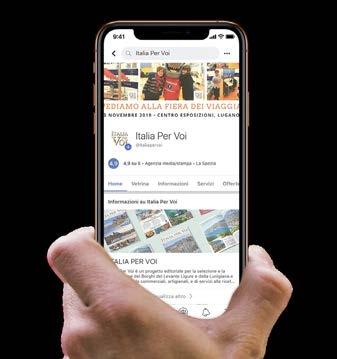


LaWSpezia is a town of the Eastern Ligurian Riviera, a tourist destination par excellence which has recently become a cruise port. It overlooks the Ligurian Sea and borders to the west with the Region of Tuscany and the mouth of the River Magra. With the Apuan Alps as spur, the town is situated right in the centre of a Gulf that bears the same name, known also as “The Gulf of Poets”, close to the Cinque Terre and its Natural Park , which is a Unesco location near many other areas which are part of the World Heritage, such as Portovenere and its islands, Lerici, the beaches of San Terenzo

• Vista del Golfo della Spezia
and the historic town of Sarzana. The area which has been inhabited since prehistoric times, is between two important cornerstones of the so called Made in Italy tourism and is however the daughter of Ligurian art, the Genoese influence stands out in the fabric of the city, especially in the decorations of the churches. The town is also the home of a century old nautical heritage, thanks to the expansion of the Navy Arsenal, built in 1860. La Spezia developed thanks to its strategic position and the junction to reach the small hamlets, real gems worth to visit; from the second half of XIX century the Cinque terre, the Magra valley, Vara valley and the eastern Ligurian Riviera became part of its territory.


PestoLab Baico
Pesto Class
Dimostrazioni di "Pesto al mortaio"

Baico, il laboratorio artigianale che produce pesto genovese e tramanda la tradizione ligure in tutto il mondo, con i suoi profumi. Oltre al pesto, fatto ogni giorno, potete trovare anche altri prodotti locali e tipici, come le acciughe di Monterosso, l'olio di oliva taggiasca, la pasta fresca, il limoncino e altre specialità.

SPEDIZIONE IN TUTTO IL MONDO!
Baico, the artisan workshop that produces Genoese pesto, and passes on the Ligurian tradition all over the world, with its scents. Apart from pesto, made every day, you can also find other local and typical products, such as Monterosso anchovies, Taggiasca olive oil, fresh pasta, limoncino and other specialities.

WORLDWIDE SHIPPING!




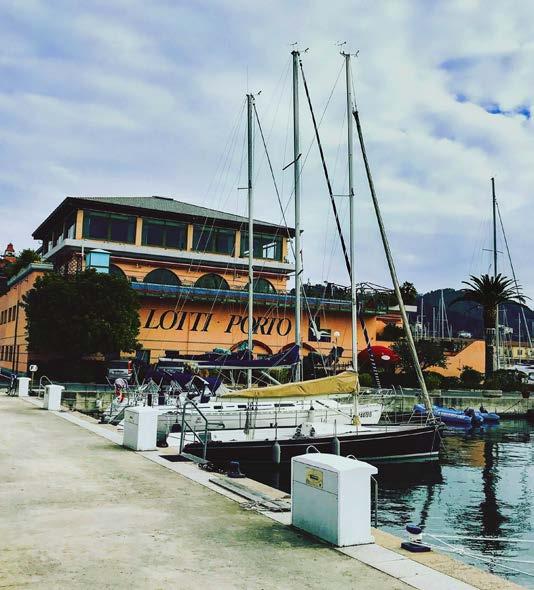

By plane: The nearest airports are Cristoforo Colombo airport in Genoa; Galileo Galilei in Pisa and the airport Giuseppe Verdi in Parma, for international flights Milano Malpensa airport, which has a shuttle service to reach the main train station Milan Central, then you can take an intercity train and reach La Spezia central station,in a couple of hours. It is also possible to land at the tourist airport in Luni. By land: The motorway to reach La Spezia from the north is the A7 if you are coming from Milan then take the A1 and the A15 motorway,

direction Parma – La Spezia, the exit is Santo Stefano Magra. If you are coming from the cities located in the centre of Italy, such as Rome, take Via Salaria, A1 direction Florence, then the A12/E80 Genoa-Parma, direction La Spezia Santo Stefano Magra.
Santo Stefano Magra is the exit for La Spezia and its centre, no matter if
your are coming from Genoa, Milan, Parma or Pisa, the town centre is just after a 7 kilometre highway, which reaches via Carducci, then from here you can choose to take the SS370 if you want to go towards the road Litoranea delle Cinque Terre or the SS 530 to reach the evocative village of Portovenere.



If you decide to take a train there are intercity trains every two hours from Milan or from Rome Termini with stops in Pisa, or the railway Pontremolese Parma-La Spezia, that connects to the Tirrenica Genoa-Rome. The right train station is La Spezia centrale, or you may take one of the fast Freccia trains.
By sea: The great ships can stop over in the ample roadstead of the Gulf of La Spezia, while pleasure boats coming from the South (Sardinia and Corsica) and from the West of the Mediterranean, can dock in the new Mirabello Port or Lotti Port, which is very close to the town centre.

During the summer months, you can take ferryboats to reach Lerici, Portovenere, Portofino and Genoa, from Molo Italia.
From La Spezia, Levanto, Lerici and Portovenere, Consorzio Marittimo Cinque Terre, offers its ferry boats and motor boats for trips along the whole eastern part of the coast, ticket prices from 11,00 Euros.
You can spend wonderful moments, especially in the morning, admiring an enchanting landscape where dolphins and cetacean can be seen, particulary in the open sea between Portovenere, Palmaria and on the coast of the Sanctuary of the Cetacean.
arrigoni1913.it info@awf2000.com sara.arrigoni@awf2000.com



Via Sarzana, 224
LA SPEZIA
+39 0187 504060
+39 348 8288793

Da quattro generazioni, dai Colli di Luni alle Cinque Terre, custodiamo e coltiviamo un territorio che il mondo intero ci invidia portando in bottiglia prodotti che vi resteranno nel cuore. Venite a visitare la nostra cantina di La Spezia, con un piccolo shop dedicato ai prodotti tipici locali e prenotate eventi, degustazioni o giornate dedicate al mondo del vino.

For four generations, from the hills in Luni to the Cinque Terre, we have preserved and cultivated in a territory that the whole world envies us, bottling products that will touch your heart. Come and visit our cellar in La Spezia, it is a small shop with typical, local products, you may book events, wine tasting or spend days committed to the world of wine.
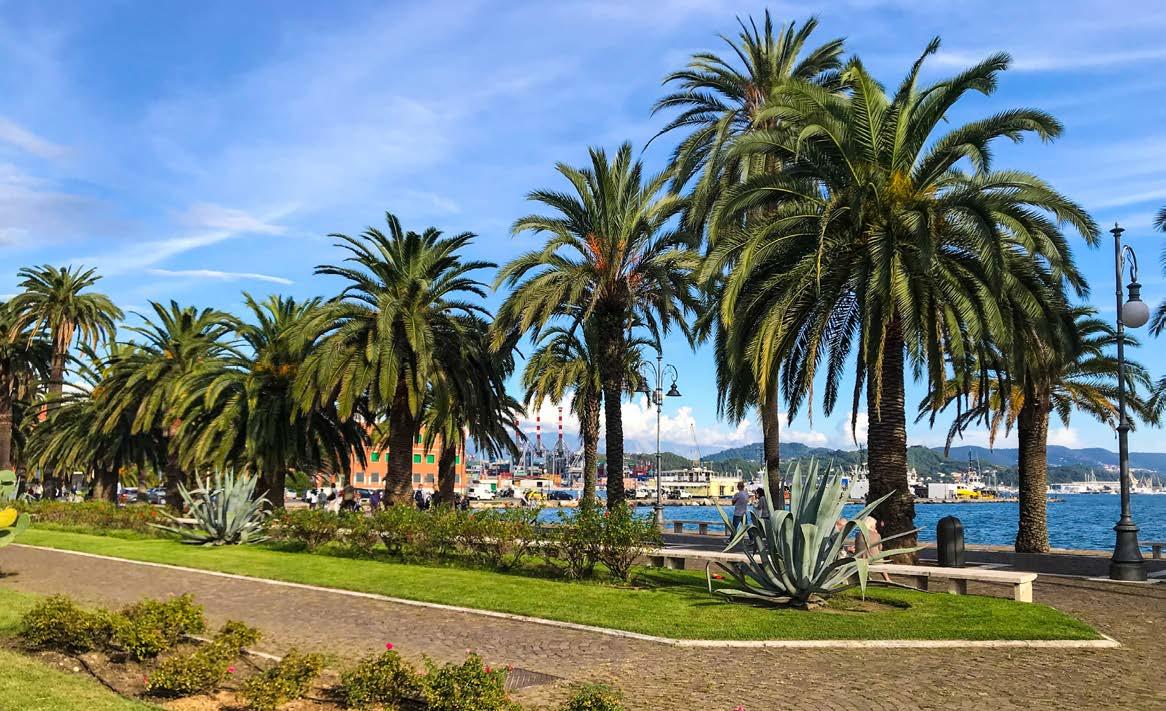


LaSpezia is a province made up of different areas, facing the pier, with a modern waterfront and hills at the back, that climb towards the panoramic state road. A town of "wide roads, tall and yellow houses", as Ernest Hemingway once wrote, that started its life as an ancient seaside village and then has become a pole of international importance for every kind of tourism. Obviously La Spezia takes care of its historical places, located in the ancient heart of the town, in via del Prione, where we come across the Civic Museum Amedeo Lia, with many paintings and works of art of the XIII, XVIII centuries, the museum is right in the pedestrian centre, with a lot of shops, boutiques, fashionable coffee bars and family run bakeries. Walking along the streets you may enjoy


Since 1982 we have been producing pottery in the Cinque Terre, using clay and colours created by us. You can buy a unique and original souvenir of the Cinque terre, completely handmade in two shops in Monterosso:


Via Roma, 9 Via V. Emanuele, 27 and live an authentic experience of the working process, in our workshop, side by side to us artists, trying two artisan techniques that mix art and nature.

potteryexperiencemonterosso@gmail.com


Dal 1982 produciamo nelle Cinque Terre ceramiche con argille e colori di nostra formulazione. Potrete acquistare un ricordo unico ed originale delle Cinque Terre completamente realizzato a mano in due punti vendita a Monterosso:


Via Roma, 9 Via V. Emanuele, 27 e vivere un’esperienza autentica nel nostro laboratorio per toccare con mano il processo di lavorazione, e fianco a fianco con noi artisti mettere in pratica due tecniche artigianali che fondono arte e natura.

potteryexperiencemonterosso@gmail.com

自1982年以來,我們一直在五漁村(Cinque Terre)生產具有我們自己配方的粘土和顏色的陶 瓷。


您可以在兩家商店購買完全手工製作的獨 特五漁村紀念品: 羅馬大街(Via Roma),9號 艾瑪努埃勒大街(Via V. Emanuele),27號 並在我們的實驗室中體驗到真實的經驗,可以直 接接觸製造的過程,並與我們的藝術家並肩實踐 以融合藝術與自然的兩種手工藝。

potteryexperiencemonterosso@gmail.com

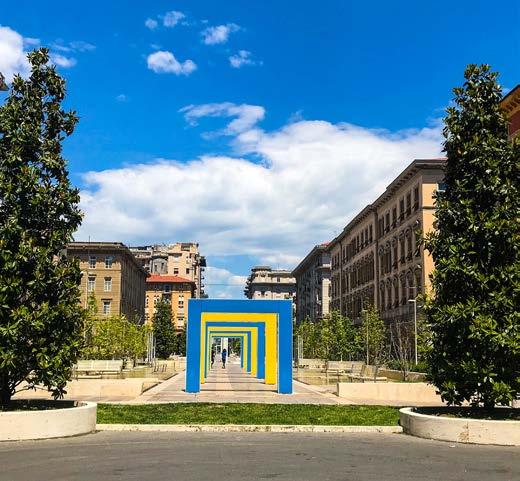

the pleasant Italian style public gardens, right next to the seafront promenade and the 1900s villas shaded by palm trees that we meet before reaching the porticos of via Chiodo. There are many Liberty style buildings, especially after via del Prione, the location of trendy shops, other beautiful buildings can be found in Sant'Agostino square. Its typical winding alleys


and the architecture of the past, can be found in the buildings facing the seafront promenade, Passeggiata Morin, which is not far from the Navy Arsenal, that helped the radical transformation of the town in the second part of 1800, as the Savoia family wanted.
Useful for travellings are the railway stations, that bear the name of the areas where they are located, Miglia-
rina and Cà di Boschetti. Worth visiting is the Castle of Saint George, an imposing fortified building of 17th century, which houses the Archaeological Museum Formentini, and a collection of Stele Statues from Lunigiana, these archeological finds are of great importance and value, as they belong to the ancient Roman colony of Luni. Other interesting places to visit are the Chur-


ch of Saints John and Augustine, the Diocesan and Ethnographic Museum, that was in the past the Oratory of San Bernardino, the Museum of the Seal, a real unique museum which is housed inside the building Palazzina delle Arti, CAMEC, a Modern and Contemporary Art Centre, and the Cathedral of Cristo Re in Piazza Europa, the area has been recently renovated to meet the needs of an increasing number of tourists that arrive at Mirabello Port. Piazza Verdi is at a short distance, this area has been renovate with fountains, benches, trees, plants and some particular arches made by Buren, it

has become a sort of garden in the town centre. The first Italian trolleybus network opened, right here in La Spezia in 1906. The service has been recently replaced by environmentally friendly buses. Public transport is provided by ATC, whose buses run along the entire municipality, including the nearest villages on the coast and those located on the hills. The bus lines L (stands for Lerici) and P (stands for Portovenere), lead to and end in Lerici and in Portovenere, there are several stops along the way. The price of a ticket, for the town centre is 1,50 € and it's valid for 60 minutes, you can also buy a 3 hour ticket, the cost depends on the distance you want to reach, ATC provides a service up to 70 km from the town centre. There is a shuttle service that runs from the parking opposite Palaspezia, not far from the exit of the motorway, there is another shuttle service in Piazza D'Armi. Pay attention to the timetables, in summer, when it's possible take a train to enjoy the landscape of the coast and to reduce Co2 emissions.






Like other Ligurian towns, the cuisine in La Spezia uses simple ingredients, and aromatic herbs. The main dressing is DOC olive oil, there are plenty of tasty wines, which are the symbol of the local microclimate: Cinque Terre Doc, Lievantu Doc,
Vermentino Colli di Luni and Sciacchetrà from Riomagiore, a suitable wine for desserts. We suggest to taste it with a good trifle or in winter with a slice of delicious chestnut cake, castagnaccio. Among the first courses the most famous is undoubtedly mesciua, a hot soup made of corn seeds served warm, we carry on with a Genoese minestrone, a vegetable soup, sometimes served adding small pasta; testaroli served with pesto sauce or tomato sauce and sometimes with walnut sauce; capponada, made with old bread dipped in



Piazza Matteotti, 5 - LA SPEZIA altuoservizio.conad.it
Prodotti tipici del territorio



Orario Continuato



Spesa Online










Typical products of the territory Non stop opening hours Online shopping







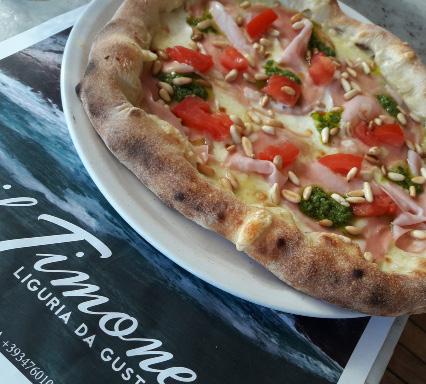
vinegar, anchovies, onions, tomatoes, basil, capers and a little 'chili . Chestnut fritters from Villafranca and panigacci from Podenzana, to serve with cheese and salami, are the best starters. What you will never find elsewhere, cooked with the same ability, is farinata made of chickpea flour, and sgabei, a fried dough served with local salami.


PORTOVENERE (SP) - Via Olivo 29
Mob. +39 347 2601008
info@pizzeriailtimone.it
www.pizzeriailtimone.it

Since 1960 Il Timone has been offering typical Ligurian cuisine as well as farinata, focaccia with cheese and yummy pizzas, the vegetables and the olive oli come from the vegetable garden in Portovenere, providing quality and unique flavours. The superb sea view will keep you company at lunch and at dinner, or while you are having a tasty snack or an aperitif. Sure comfort and a careful hospitality will pamper your welcome.

Il Timone dal 1960 offre cucina tipica ligure unita a farinata, focaccia al formaggio e goduriose pizze, dall'orto di Portovenere arrivano verdure e olio per offrire qualità e sapori unici. La superba vista sul mare vi accompagnerà a pranzo e a cena passando per una gustosa merenda/aperitivo. Sicuro comfort e cura dell'accoglienza sarà la vostra coccola.



We don't need to go down into details about the delicious fish dishes, first of all the mussels, stuffed or stewed, cooked with homemade tomato sauce, and whitebait fritters: any restaurant will be able to offer a taste, according to its personal recipe.
The prince of second courses is the cod, served with polenta, in La Spezia it is fried in a pan, adding

A Portovenere, dove il carugio porta alla famosa Chiesa di San Pietro, trovi l' "Antica Osteria del Carugio". Qui la cucina è storia e semplicità dei prodotti. Polpo, muscoli ripieni, acciughe, pasta fatta a mano ogni giorno e antichi piatti locali insieme ai vini liguri e alla mesciua sono sicuramente da provare. Ogni giorno un piatto dal mare o dal nostro orto ti sorprenderà e un bicchiere di vino passito ti regalerà il dolce congedo.
In Portovenere where the alley leads to the famous church of San Pietro, you find "L'Antica Osteria del Carugio". Its cuisine means local history and simple ingredients. Octopus and stuffed mussels, anchovies,home made pasta prepared every day, ancient local dishes together with Ligurian wines and mesciua must absolutely be tried. Every day a fish dish and our kitchen garden will surprise you and a glass of passito wine will be a sweet farewell.

www.anticaosteriadelcarugio.it


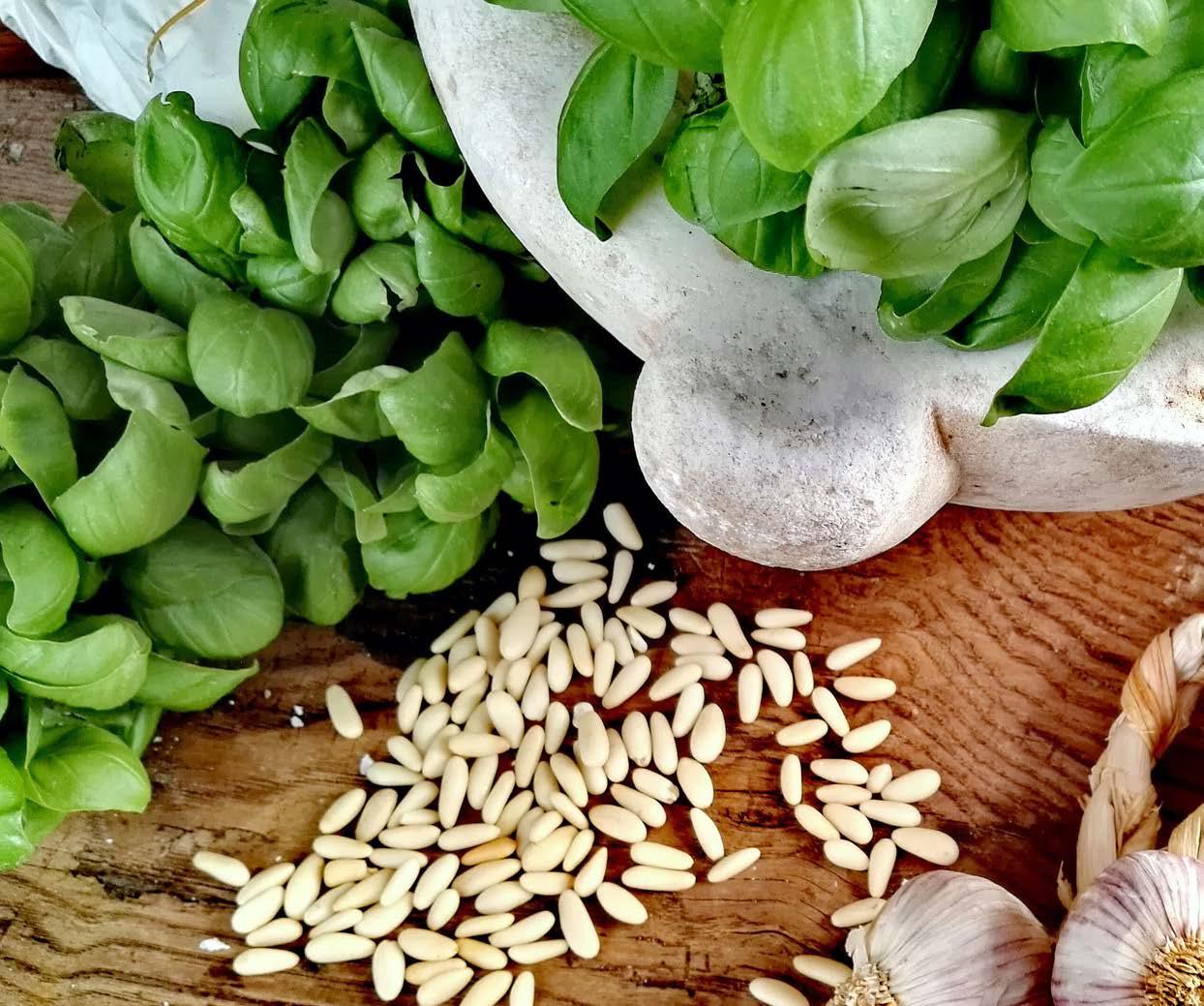


chard and tomatoes.
Try to find the anchovies from Tramonti, at the market, and eat them with a sprinkle of lemon juice. Cuttlefish, hakes broth, baked sea bass and sea bream, cooked with herbs, grilled or stewed crabs; stuffed squid, in Lerici they make some very good ones. Many organic products come from its province, meat, rabbit and poultry, cooked with milk or wine, different types of


H
otel del Golfo, nel centro di Lerici, è situato in posizione ideale per visitare le bellezze del Golfo dei Poeti. La Locanda del Golfo si colloca nel panorama della ristorazione lericina grazie al mix tra la professionalità e la cordialità di tutto il suo staff, coordinato dal titolare Carmine Muro, ala posizione in un ambiente affascinante e al menù variegato di pesce e carni dall'impronta tipicamente mediterranea, nel quale i sapori classici si fondono con alcuni tocchi innovativi.



Hotel del Golfo is located in the centre of Lerici, in a convenient place to visit the beauties of the Gulf of Poets. The Locanda del Golfo is part of the local restaurants of Lerici thanks to a mix of competence and kindness of all its staff, well managed by the owner Carmine Muro, who works in a charming location serving a menu based on fish and meat, with a typical Mediterranean style, where classic tastes merge with new ideas created by the chef.
NEWS 2020: TAKE AWAY



homemade pasta, such asf trofie, trenette, bavette or cannolini served with broth, many local dishes use fish or use products that come from olive groves, vine yards, vegetable gardens, such as peaches and apricots put in syrup or artichokes, onions and peppers cooked and stored in olive oil.
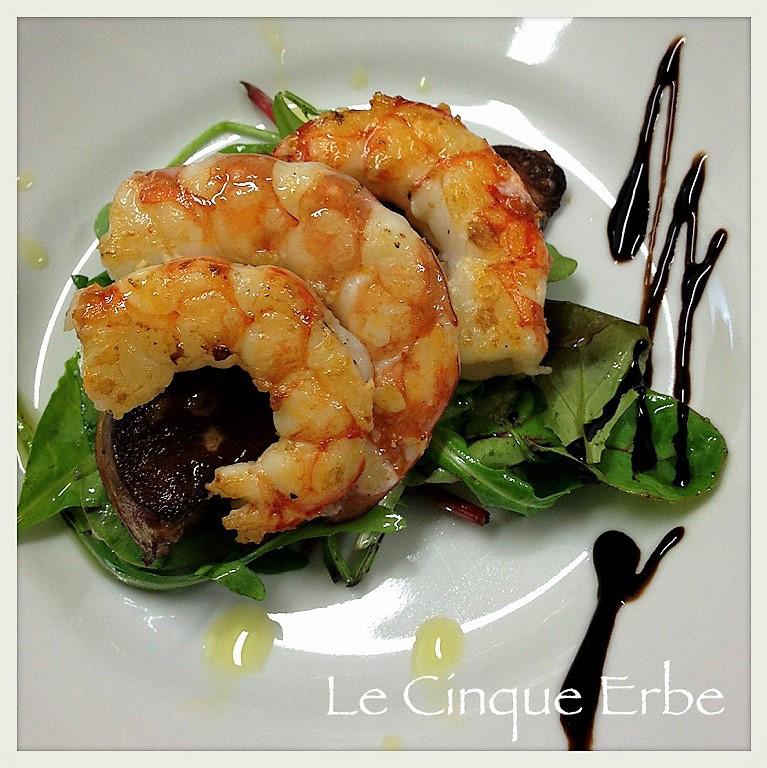


Il ristorante della Baia propone una cucina mediterranea di mare e di terra senza compromessi, leggerissima e profumata, al giusto prezzo.

Our restaurant “Ristorante della Baia” offers, light, aromatic surf-and-turf Mediterranean cuisine accompanied by excellent wines, at very reasonable prices.

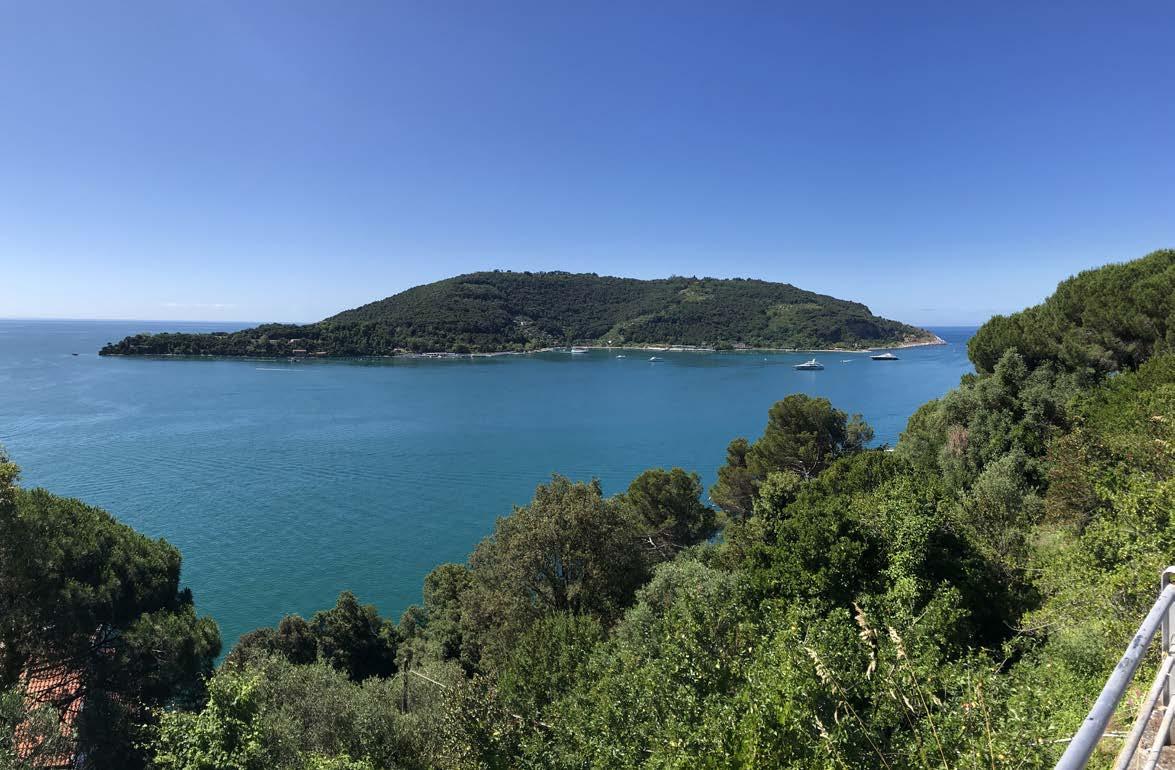

Whenyou stay in La Spezia, you should not forget about the inland. Worth to mention are the historic gardens, open to the public, a small botanical garden located in the town centre, behind the historic centre of via Chiodo, where there are benches for resting and admiring beautiful examples of the local flora, such as the scented cedars of the east. For those who don't want to turn down the sea, Morin promenade is just there in front of you, there are kiosks and eateries in abundance, waiting for you. The best season

to enjoy the kind atmosphere of La Spezia is not the summer, but the last days in spring. The town does not have a proper beach, you can either go to Lerici in about ten minutes by car or to Portovenere, more or less at the same distance. La Spezia is a perfect place when it's warm, and the flowers in the parks are in bloom, there is an explosion of colours and shops often meet the tourists needs, applying reduced prices. The benefit of the climate can also be appreciated inland, walking along the path that runs along Mount Alpicella and goes up to Mount Gottero, here you can admire the lush woods of hornbeams and birch trees, as well as the range of biodiversity of the Tuscan Emilian Apennine, bumping into






• Panorama dal sentiero per Portovenere
anemones and wild orchids. Near Arcola, the Lipu Oasis of Saint Genesio is waiting for your visit, this is one of the best places for bird watchers, it is part of the Regional Natural Park of Montemarcello-Magra. The Park is responsible for protecting the area of the river, that includes the stretch of the river Magra that flows in Liguria from the promontory of Caprione, then from Arcola towards Punta Bianca and the sea: it goes from the Gulf of La Spezia and the open sea on one side , to the mouth of the river Magra, the plain of Luni and the Apuan Alps on the other part, an arch of eighteen municipalities including Brugnato, Pignone, Santo Stefano Magra and Sarzana.Here, surrounded by Mediterranean maquis, among holm

oak bushes, myrtle, we bump into white cistus and hawthorn berries on the promontory of Caprione, we can cherish in the peaceful humid zones where water birds nest, protected by the area of Montemarcello, a true joy for the eyes. The magnificent cork oaks grow almost undisturbed in the area of the Cinque Terre. While walking, surrounded by vegetation, sometimes the woods give way to pastures and cultivated terraces, admiring glimpses of paradise of the National Park of the Cinque Terre and its clean sea. However, be careful, not to leave the beaten track, the many trails, for those who love this kind of sport, are very busy, you need all the proper information, so you won't get lost.



Thewide inlet that contains the Gulf of La Spezia, stretches from Lerici to Portovenere, the easy paths that run through the woods and the hills are worth seeing, and suitable also for families with children.
Near the Bothanical Park in Montemarcello or in the alleys of the villages located on the High path of the Ligurian Mountains, in La Serra or in Pignone, cycling or going along the paths by the sea, from Sarzana to Versilia it is possible to find relaxing moments for all tastes.

From Tellaro going towards Lerici, for example, the paths cut through olive groves, cedar forests and wild fields, without losing sight of the shaded view of the coast; the Cinque Terre, at twenty minutes drive from La Spezia, provide paths, that go from Riomaggiore to Vernazza, or from Manarola to Volastra, you must stop at the beautiful Sanctuary Madonna della Salute. Even walking along the path on the island of Pal -

maria, wich is located opposite the village of Portovenere, is very interesting for those who love trekking, you can reach the island by ferry from the pier of La Spezia. Campiglia is crossed by the main hiking routes of the Riviera Spezzina, that go from Portovenere to Deiva Marina, the hilly roads are a must for romantic evenings, once the inhabitants of Campiglia took care of the terraces, the many trails, even circular trails lead to different • Biglietteria Traghetti




neighboring areas. The wonderful marine area of Tramonti, can be reached walking along Persico path, which is marked number 11 on the map of the Alpine Club, the starting point is from the area of Acquasanta. The surroundings can be reached by car, just after Campiglia and Tramonti, going towards Portovenere, Cadimare stands out with its views, it is a tiny fishing village where they cook an excellent grilled fish and the village Le Grazie, that has an old tradition in shipbuilding, there is a small bay equipped for pleasure boats. Inland we find the villages of Pignone and Carrodano, surrounded by woods and karst formation, then Riccò del Golfo, Sesta

Godano, Rocchetta di Vara and Bolano, with their parish churches and medieval castles, they are old trading centres perched among streams and ridges, where you can feel the typical atmospheres of the sixteenth century, rural landscapes where agriculture is still a prevailing part of the economy. From the villages of Ortonovo and Castelnuovo, going down towards Santo Stefano Magra, on the other side of the municipality, we find the famous artisitc town of Sarzana, well known for evening gatherings and the amazing Firmafede fortress. Although nature and particular backgrounds can be found in the outskirts, the town of La Spezia still keeps many of its historic charm. Via Chiodo, is crossed by all ATC buses, first of all you can visit via Prione a long and narrow road like the typical Genoese carrugi, with plenty of side streets, that overlook the former residences of the Doria Marquis.
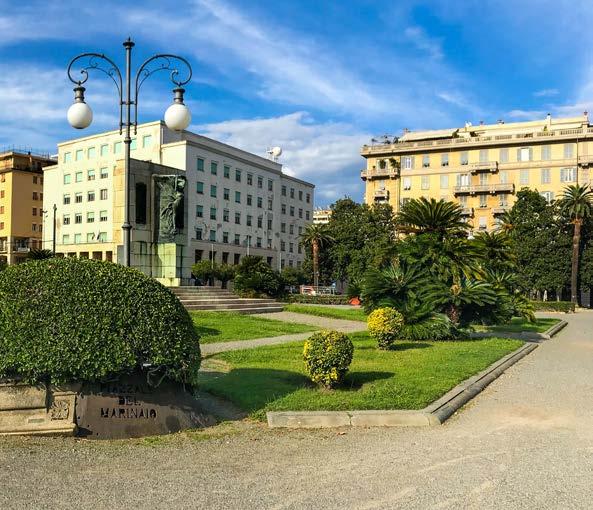




This area is 'the shopping heart of La Spezia, with several cheap guesthouses. We then find Piazza Sant'Agostino with the church that beards the same name and Corso Cavour, home of Liberty buildings. Piazza Verdi is in the centre, the Post Office building overlooks the square, in the road above, we find the magnificent Villa Marmori, which is now the Musical Conservatory. In front of Piazza Europa, going up a few steps, we reach the Cathedral of Cristo Re, a superb building with a circular shape, and a dome that overlooks the whole town.
La Spezia has recently opened Mirabello Port, going towards Lerici we can bump into another

port just as much sought after, Porto Lotti a big area which is not only a berth for yachts and catamarans but with its privileged position, from here you can reach every part of the coast, it attracts the attention and the culture of shipowners. The place often hosts exhibitions and events, and is equipped with all facilities. Good to know: La Spezia is also festivals, sports and good music. In July there is the Artsenal Festival which hosts theatre and dance celebrities one of the most famous of the contemporary scene, that attracts people of all ages from the North of Italy, the music events continue till late summer. Every year on the first Sunday in August there is the Palio del Golfo, a century old rowing race between thirteen teams from the seaside villages of the gulf, it takes place in the stretch of sea in front of the promenade, the boats have all been handmade by local artisans. Every year, on March 19 there is the celebration of the patron saint of La Spezia, Saint Giuseppe, with an incredible display of stalls, mainly located in the area of the Historic Gardens, where you can taste typical food specialties, or buy clothes and other types of items; another big event for true gourmands takes place in December at Centro Fieristico Spezia Expò, here you can taste and buy



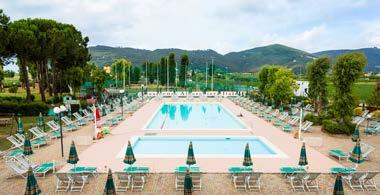
Aperto tutto l'anno, situato nell'antica cittadina di Luni e a pochi minuti dal mare, immerso in un parco privato di 7000mq è particolarmente indicato per famiglie e per chi vuole visitare le vicine 5 Terre e la Versilia. Tutti gli appartamenti dispongono di ampio terrazzo abitabile e attrezzato. Servizi inclusi: 2 piscine, una per bambini; campi da tennis e calcetto; parco giochi; wi-fi; noleggio bici; navetta per il mare.

Is open all year round, and is located in the ancient town of Luni, at a few minutes distance from the sea.It is plunged in a private park of 7000 sqm, The place is particularly suitable for families and for people who want to visit the Cinque Terre and Versilia. All flats have a large, habitable and equipped terrace. Services include 2 swimming pools, one for children, tennis courts and five a side football pitches, playground, Wi Fi, bicycle rental, shuttle bus to reach the beach.


the best examples of the eastern Ligurian cuisine, you can reach Spezia Expò by shuttle bus.
The major Trade Fair of the town, takes place at Spezia Expò in March, there is always a wide range of products and activities, and the best brands of the town on display. Around Christmas time, there


are many evocative events in the province that remember the birth of Jesus Christ, chosen divers of the Navy enchant us with their initiatives. In La Spezia you will appreciate the beautiful colours of the inland underbrush in autumn and especially in winter. Very close to the town, there are the ski slopes of Zeri, in Lunigiana (the only ski resort in Italy where you can ski and look at the sea at the same time ) and Cerreto Laghi, in the province of Reggio Emilia, an hour's drive from the town centre.




InPiazza Giulio Beverini you can pay a visit to the church of Santa Maria Assunta, actually it is more like an abbey than a church. The church is probably the oldest religious building of La Spezia. Even if it was bombed during the war, it was subsequently renovated and it hasn't lost its Christian charm, with the typical Ligurian architecture, divided into wide naves with columns on both sides, and two smaller aisles, the outer cover is vaulted, with grey stones on top of the light yellow plaster, with the characteristic stripes. Similar in age and structure is the church of Nostra Signora della Neve, located in Via Garibaldi, it has a Byzantine style, the materials used inside are in general richer compared to the other church, the pulpit was made by the sculptor Angiolo Del Santo. The church is divided by three naves and has a panelled ceiling. The facade is decorated with alternating stripes and the access is through a gate and wide steps. One of the three portals, the central one, has a richly decorated prothyrum. There are two

fake bell towers on both sides, the real bell tower is the on bottom of the church, on the right side, in Via Napoli. In the central Piazza Europa, on a privileged location, is the imposing Cathedral of Cristo Re: with an unmistakable circular structure, protected by a wide churchyard, inside there are twelve pillars marking off an ambulator and its central hall, that can hold up to 2,500 people. When the Diocese moved to La Spezia in 1929, it was important to create something that could join the centre of the town with the eastern part, so a competition was called, it was won by the architect

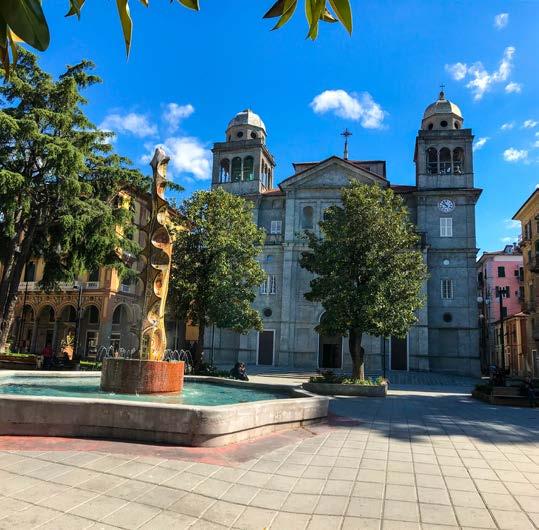
Brenno Del Giudice, unfortunately the project was shelved until 1956, when it was completely altered by another architech Adalberto Libera, who understood the potentiality of the new church with its wide square in front, so he decided to emphasized the religiuos area, placing the church yards behind the building, the cathedral is just like a big ring that ideally and phisically joins these areas.
During implementation, the original project of the architech Adalberto Libera was partially changed by the architech Cesare Galeazzi. In the vaulted crypt there are the relics of
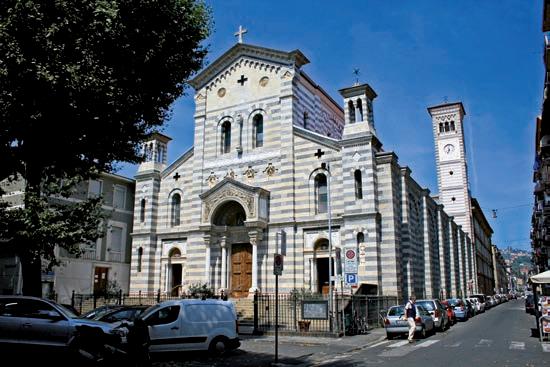
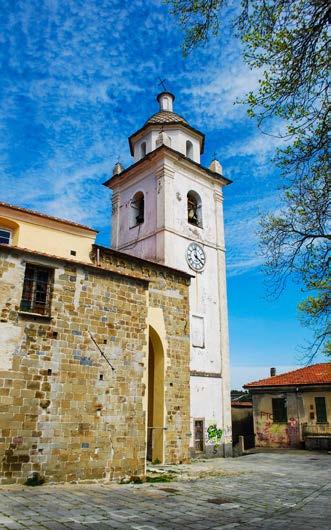













Saint Venerio, the tomb of the mystic Itala Mela and the first bishops of the Diocese. The cathedral was consecrated, only in 1975. La Spezia is also famous for its Museum of Modern and Contemporary Art (CAMeC), the building in the past was the Palace of Justice, it was then adapted to host the most disputed scenarios, recent works and atmospheres, it is located in Cesare Battisti square. The building develops in height and has several rooms built especially for exhibitions and conferences, on the roof there are two large terraces, also used to display works of art and to look at the town from a diffe-

rent prospect. The museum houses the collection of the Gulf prize and also the collections Cozzani and Battolini; you can also admire works by Jacopo Benassi, Cinzio Cavallarin, Mauro Melis, Monica Michelotti, Ottonella Mocellin, Nicola Pellegrini, Romano Rizzato and Diet Sayler among many others. The museum organizes regularly temporary exhibitions. Certainly smaller and more discreete, is another museum which has a completely different character, the museum Amedeo Lia in Via del Prione, its name comes from the collector Amedeo Lia, who donated the majority of the works, that belong to different periods, Medioeval miniatures and a rich


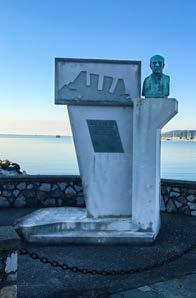


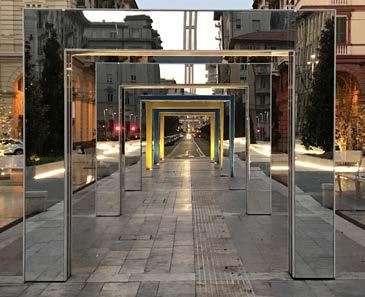






collection of paintings of the seventeenth century. The castle of Saint George is a historic castrum, located in the inner part of the town, with its untouched walls, it overlooks the buildings from above the hill Il Poggio, it has a sort of mysticism aura, typical of the Medioeval fortifications. The castle of Saint George is the most emblematic monument of the past of La Spezia: its tower is built in the highest part of the structure, and leads to a small part of the old foundations. In 1443, the castle underwent a considerable renovation, a new wing was added in the the lower part of the castle, for using weapons; also the bastion was built after, in order to increase the defense, unfortunately this is no longer visible, recently some ruins have been found in the area of the university campus, behind the castle. The castle is also the archaeological museum Formentini (known as the Museum

of the Castle of Saint George), a place of incredible importance as regards prehistoric artefacts, it houses the mysterious stele statues. The name of the museum Ubaldo Formentini, was given to remembered the director of the Library and Museum, who worked there from 1923 to 1958, and was also a protagonist of the cultural life of La Spezia, he was the biggest promoter of the history and customs of the people of Lunigiana.
For those who love art and history there is also the Naval Technical Museum in Viale Amendola, with an important display of nautical objects of the past, this museum maintains a strong link between the town and its arsenal, thanks to the help of the historical office of the General Staff of the Navy. The purpose of the museum is to maintain the nautical traditions,
gathering and promoting information and traces of its glorious past, through a collection of Roman amphorae, models of ancient boats, old uniforms and precious finds, among which there is the stern of the Polar Star, MAS by Luigi Rizzo, Grillo and others, a sort of flashback during the war with its relics, the love of men for sea has no age; the new exhibition tries to illustrate the evolution of




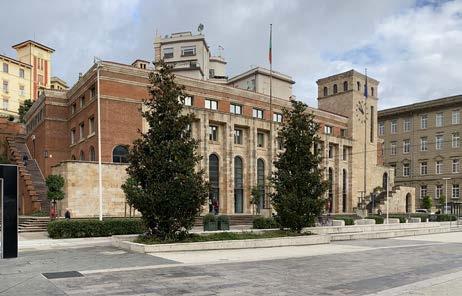

•
the ships and the nautical art over the years, up to now. The museum has in addition, more than 150 models of boats, submarines, torpedo boats, prototypes of underwater weapons and old models of assault weapons. The real gem of La Spezia, is the innovative Mirabello Port, which was inaugurated in September 2010 after a massive reclamation and the construction of its piers. It is located in the bay,between the docks Duca degli Abruzzi and the Mercantile port, it has an artificial peninsula of 40,000 square metres and a stretch of water of 270,000 square metres; this area has not changed the coast, enhancing and providing every type of comfort, there are moorings for boats up to 100 metres wide and the big docks useful for parking, near the boats. The port is open all day, the entrance is on the east side, near the breakwater which runs along the west-east axis, to protect it from the southern winds. Mirabello Port offers 407 mooring, prefering a high target, mega yachts and luxury style boats. There is a heliport for helicopters, 1300 parkings and a quali-


•
• Sede Ammiragliato
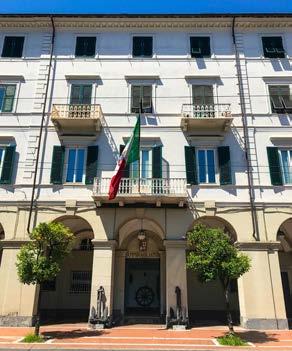
• Centro Commerciale


fied staff for mooring and maintenance; thanks to a synergy with the Port Authority of La Spezia, there are more than 700 berths for boats smaller than 14 metres, on 13 floating docks, located outside the main pier. Being near Lerici, Porto Venere, Cinque Terre and Portofino, but also to the major islands of the Tyrrhenian Sea, makes La Spezia an ideal place for short trips to the most fascinating tourist destinations, such as Capri, the Amalfi Coast or the beautiful Porto Cervo in Sardinia. The area was built in total respect of nature and environment, and has been awarded the Blue Flag in 2013 Approdi Tours.
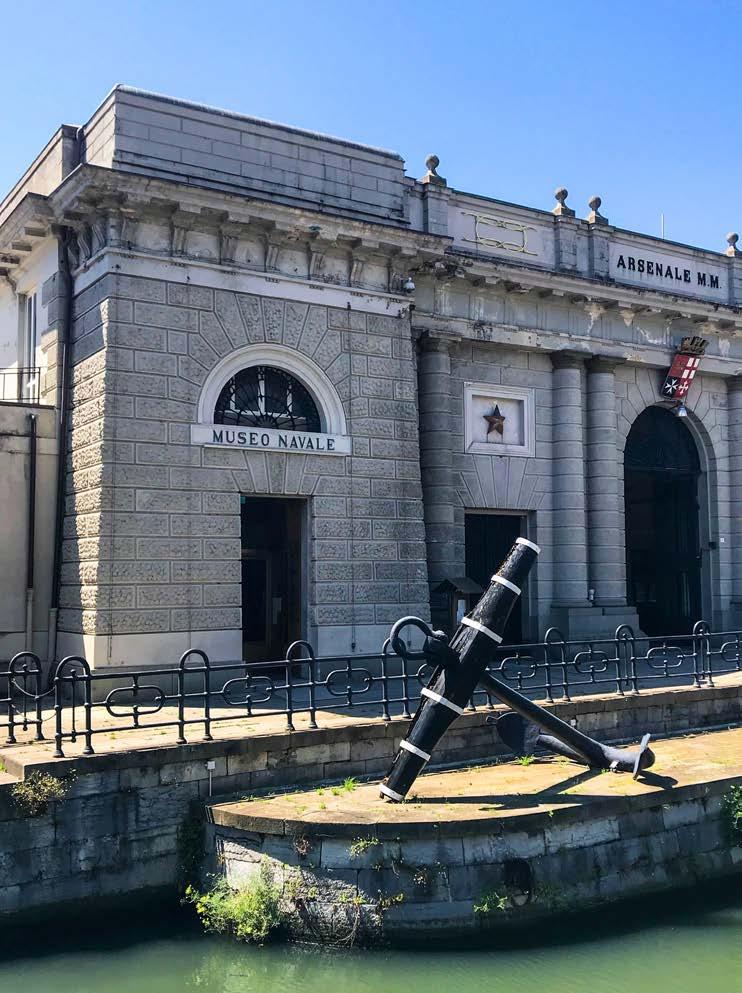
by Leonardo Merlini Director of the Museum
The Technical Naval Museum of the Navy in La Spezia is one the most important museums in Italy of this kind, and among one of the most ancient in the worild. Heir of the millenary naval and maritime Italian tradition, the museum hosts tens of thousands evidence and relics, of different historic periods – from Roman times to the Maritime Naval Republics, the Marinas before the unification, the Royal Navy and of the actual Navy, plus evidence of the costant technological development linked to the sea.
The collection dates back to the eighteenth century, when the relics of the Real Marina Sabauda, preserved for years in the naval base of Villafranche sur Mer near Nice, formed the first important pieces of the Museum Amedeo VII of Savoy, called "Conte Rosso", who created in this location the first Naval base of Sabaudia at the end of the fourteenth century, from this moment onward the collection began, in 1775 it obtained its first ordering as museum. At the outbreak of the French Revolution, the objects were transferred to Cagliari and then Genoa, in 1870 with the Unification of Italy and the contruction of the Military Maritime Arsenal, the collection was definitly taken to La Spezia.
After the reconstruction of the Arsenal, fol-

lowing the bombardments of the Allied and of the Germans during the Second World War, the new and current headquarters were inaugurated on 12 May 1958.
The visit takes place in various rooms, divided into
Viale Giovanni Amendola 1
La Spezia
Tel. +39 0187 784763
• marinanord.mtn@marina.difesa.it
Segreteria: +39 0187 784836
• Biblioteca: +39 0187 785571

different exhibition sections, the pictures of this reportage offer us, through an original artistic interpretation, a brief but intense visual experience with captivating details that will surely hit today's attentive readers and future visitors.
First of all, the Amerigo Vespucci Ship (PHOTO 1), the most beautiful ship in the world, symbol and ambassadress of Italy, and therefore of the Made in Italy in the world, photographed during one of the countless stops in one of the ports in

PHOTO 2
Detail of the model of one of the ships of Nemi. The two Roman ships were rescued in Lake Nemi, with the help of the Navy between 1929 and 1932. The ships date back to the I century AD and show a particular building technique that the Romans used to cover the hull of their ships, using lead sheets and coppers rivets, to safeguard the wear out due to marine microorganisms such as shipworms (teredo).

PHOTO 3
Model of a Roman prow trireme with rostrum and crows, designed by Caio Duilio to fight the Chartaginian ships during the First Punic War (264-241 B.C.); beside a detail of a Roman trireme with rostrum and apotropaic eye, precursor of the figureheads.
A remarkable collection of naval models, many of which made by the workers of the Arsenal and of the museum, that testify the costant progress of the techniques related to the nautical art, providing evidence of the nautical history, from its early beginning to present day. They are ancient ships, for example the hull of Roman ships that were salvaged in Lake Nemi (PHOTO 2) and the three oars designed by Caio Duillio (one of the first Navy Admirals in history), with bumpers and corvus to board the ships of the enemies (PHOTO 3); vessels that belonged to the Navy of the states before the unification, that remind us of the time of sailing; and models of the Italian Naval units of the twentieth century.
The atmosphere that you perceive inside the museum is steeped in History, Men, and businesses that passed down the courage, skills, initiatives and the extraordinary talent for technical innovation in the Maritime sector,

that has always distinguished the Italian Navy. In the hall dedicated to Guglielmo Marconi there are unique objects related to the activity of the Bolognese inventor- for example a device used to receive and transcipt radio signals, thanks to the Morse alphabeth (PHOTO 4)- besides the most important collection in the world of original equipement related to the first naval experiences, carried out in the Gulf of La Spezia.
The presence of the Navy heroes is still alive and is sealed by the imposing statue created by one of the greatest Italian sculptors of the twentieth century, Francesco Messina, dedicated to the highly decorated commander Costanzo Ciano (PHOTO 5) hero of the MAS division in the Great War. The majestic monument dedicated to the submarines lost during World War II (PHOTO 6) lead our respecful thoughts to all those who did not hesitate to sacrifice their lives for a better world and future.

PHOTO 4
Detail of one of the first telegraphic printers, used to riceive radiotelegraphic communications in the Morse alphabet.
5
Bronze statue depicting Costanzo Ciano, made by the sculptor Francesco Messina, one of the most appreciated and well known Italian sculptors in the world of the twentieth century.

6
Detail of the memorial monument dedicated to the submarines fallen for their homeland, made by Marmori and Ambrogetti in 1987; on the right a 100/47 cannon, model O.T.O. 1938, boarded on the majority of the Italian submarins built after 1932.

A series of torpedos built in different periods and various specimen. They were used in the world wars by the underwater and surface sections of the Italian Navy, and by the torpedo bomber units of the Air force.

The specific technical feautures are dealt in the related sections of each topic, where visitors can enrich their experience and knowledge.
The room dedicated to underwater weapons, with a wide display of torpedos (PHOTO 7), tells us about the technological developments of this particular and sophisticated weapons. The room dedicated to leading diving equipment, has always shown the Navy and the town of La Spezia at the forefront, and shows the development of diving techniques in the deep sea and in the abysses (PHOTO 8 and 9).
A rich section is dedicated to the evolution of weapons and artillery, and offers to the careful visitor a big selection of naval and non na-
Elmo mod. 1905 (II type) built in the 1970s by the firm Galeazzi from La Spezia. The model is on display next to other types of helmets that recall the extraordinary deeds in the initial training of the divers.
9
Rigid hinged diving suit model "Galeazzi Regia Marina 200" for diving in the depths. The equipment was made at the beginning of the 1930s and was used by submarine rescue ships till the 1970s, it allowed to move easily at 200 metres depth.
val cannons, small weapons and other equipment, starting from 1500 to the present day. To seal all this, a small gem, a ball chained (PHOTO 10) used on the broadside during the fire fights between vessels, and the imposing central shooting of the battleship VITTORIO VENETO (PHOTO 11), in WW II, twin ships of the battleship ROMA, that by using 8 operators at the same time, could optimize its shots at sea.
The splendid Sala delle Polene, a unique display in the whole world, a rarity in its kind, concludes the visit. Twenty-eight figureheads of various Italian and foreign seafaring, belonging to vessels from the 17th to the 20th century, displayed in a suggestive frame that recalls their original position on the forehand to sail the seas and winds. Their origin is as old as sailing itself; for centuries they have protected sailors in their voyages, and today we still find still them with their unspoilt charm.
Women and warriors, goddesses, monsters and animals: realistic and magical figures

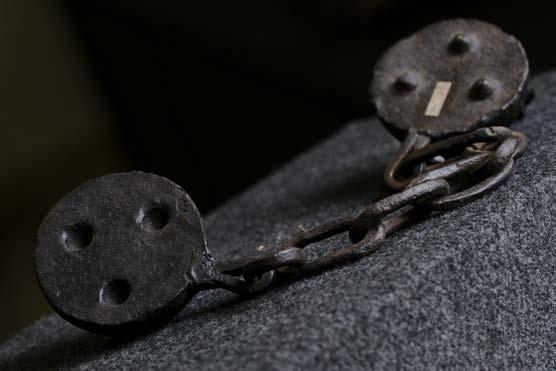
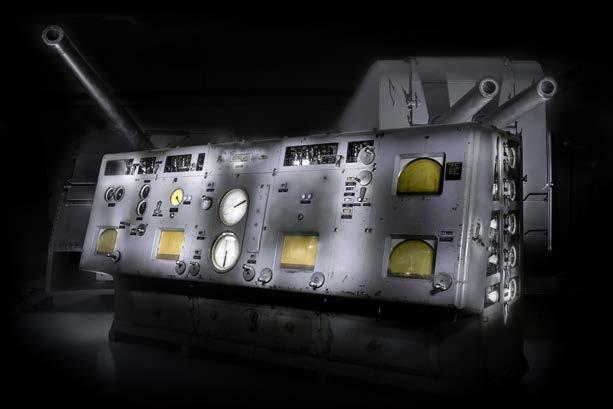
10
Chained ball dating back to the seventeenth century. Opening the device, after shooting from the muzzle of the cannon, allowed the chain to cut the rigging and the actual manouvres of the sailing ships attacked.
PHOTO 11
Electro mechanical plant built in 1937 by Officine Galileo for the fire direction of the artillery 381/50 of the battle ship Vittorio Veneto (1940-48). At the time this plant was considered high technology.
In the background on the right a 100/47 (1928) binary plant from the battle cruiser Raimondo Montecuccioli, on the left 100/47 OTO Cannone installed on corvettes like IBIS.


PHOTO 12
Figure head found adrif in 1868 in the Atlantic Ocean, it probably belonge to a Nordic merchant vessel. It was renamed Atlanta for the pose that recalls the attitude to running according to the Greek Mithology.
that welcome and accompany us on this wonderful tour, just like Atlanta, a figurehead found adrift in 1868 in the Atlantic Ocean, it probably belonged to a Nordic merchant vessel (PHOTO 12), or the Celtic bard that embellished the prow of the motorvessel Cambria (PHOTO 13), during the famous venture of the Thousand.
The Technical Naval Museum of La Spezia closes only at Christmas, New Year's Eve and on 15th August, it is always ready to renew with enthusiasm the emotions of tens of thousands visitors, that every year pay a visit.
There is nothing more to say but to set sail and navigate in its history and heroes, guided by the figurehead of Christoper Columbus (PHOTO 14), that just as then, leads the way...
13
Polychrome figurehead in oak wood depicting a Celtic bard. It belonged to the motor vessel Cambria, launched in London in 1844 and purchased by Agostino Bertani for the Thousand expedition. In 1861 the property passed to the Garibaldian Marina and the Royal Marina.

Figurehead in golden wood, of the Italian Navy schoolship Cristoforo Colombo, twin ship of the Amerigo Vespucci, launched at Castellammare

Thehistory of La Spezia is rich and certainly much older compared to many other towns that are along the coast, we can say unique in its kind.
As regards the name of the town, there are several opinions about it, the historians believe that it was probably for its hospital role, but perhaps because of its trades and the salt tax, which was a basic necessity in the houses of the aristocrats, as it was shipped throughout Europe. In the Dark Ages, the town was under the jurisdiction of the bishops of Luni, who as lords of the Gulf, struggled against the descendants of the local lords Obertenghi, Vezzano, Lavagna and Da Passano. The influence of Genoa begun around the twelfth century, but only in 1273, after a brief period under the Fieschi family, La Spezia became part of the jurisdiction of Genoa as well as Carpena. After 1371 the town became the administrative seat of the eastern




Riviera. The statutes of the town date back to 1407. In 1797 the town was part of the Ligurian Democratic Republic, as per direct decree of the General Napoleon Bonaparte, this started its real economic and demographic development. Napoleon, who had ambitious military plans, understood that La Spezia, with its narrow streets, situated in an environment protected by a gulf, could becone the maritime bulwark of his future empire; after his defeat he celebrated the town as the city with "the most beautiful harbor of the universe ".
Almost a century later, with Domenico Chiodo as leader, the project of the Military Arsenal started, this became the feather in the cap of the Navy, with its several hectares, that included nearly thirteen kilo -

meters of inner roads, blended with the city as a real vital offshot, it employed workers, engineers and cartographers. In that period La Spezia acquired another kind of popularity, not less important than the military and commercial sectors, as a place for elite tourism, when the royal families and the most brilliant intellectual minds came here on holiday, the town changed its civil architecture, a soul innovator with an impulse towards the future. Between the first and second decade of the twentieth century, also La Spezia had an unusual artistic momentum, it was the centre of modernism and futuristic cultural gathering backgrounds; not even the bombing of the Second World War,
weakened its spirit, as on the mountains of Gottero the partisans resistance helped to free the town before the arrival of the Allies. At present La Spezia is trying to build new infrastructures and to develop its hospitality towards tourists and cautious investors, through services that were not considered important until the end of the second millennium. The new generations understand the importance of a European integration; the economic dash is trying to fill the gaps of the past, to meet new requirements of beauty due to the development of the markets, not just of the real estate sector, but also on a larger industrial scale.

Spezia boasts a corollary of villages, towns and coasts all well connected, that were trading ports in Roman times and now an important heritage to protect, as well as to visit. Portovenere, the magnificent fortified town that grew up from the sea, is like a natural continuation of the Gulf, with the islands of Palmaria, Tino and Tinetto guarding the deep sea, full of wonders.
Fortess Umberto I on Palmaria island is "the sea fortress" that hosts thematic exhibitions, conferences, shows and cultural events, while the island of Tino, which is a military area, can be visited on September 13, the day of the celebration of the patron of the Gulf, Saint Venerio, here there are the remains of


It was inaugurated in 2017 by Elia Bellingeri, the restaurant, cocktail bar Torre Aurora boasts a breathtaking location, unique in the world. Fantastic views can be admired from its terraces, overlooking the Gulf of the Cinque Terre. Extraordinary emotions await suspended between history and the contemporary world, for the joy of your eyes and your palate. The kitchen and the cocktail bar are open all day long.


Torre Aurora是雞尾酒吧餐廳於2017年由 埃里亞.貝林格里(Elia Bellingeri)主持開幕,擁 有全球獨一無二的壯麗地理位置。 從這個 俯瞰五漁村(Cinque Terre)海灣的露台上可以 欣賞到奇妙的景色。 在這裡,無與倫比的 情感在歷史與現代之間,多重的喜悅在眼前 與味蕾之間等待著您。 餐廳和雞尾酒吧是 全天開放。







Inaugurato nel 2017 da Elia Bellingeri, il Ristorante cocktail bar Torre Aurora vanta una location mozzafiato unica al mondo. Fantastici panorami si possono ammirare dalle sue terrazze dominanti il golfo delle Cinque Terre. Qui straordinarie emozioni vi attendono tra storia e contemporaneità, tra la gioia degli occhi e quella del palato. Cucina e Cocktail Bar aperti tutto il giorno.


the Benedictine monastery of Saint Venerio and Santa Maria del Tino can be seen. Lerici, on the other side of the Gulf, with its powerful castle, merged with the beaches and the modern promenade leads us to Venere Azzurra, the promontory of Marigola and the village of San Terenzo. Before you reach
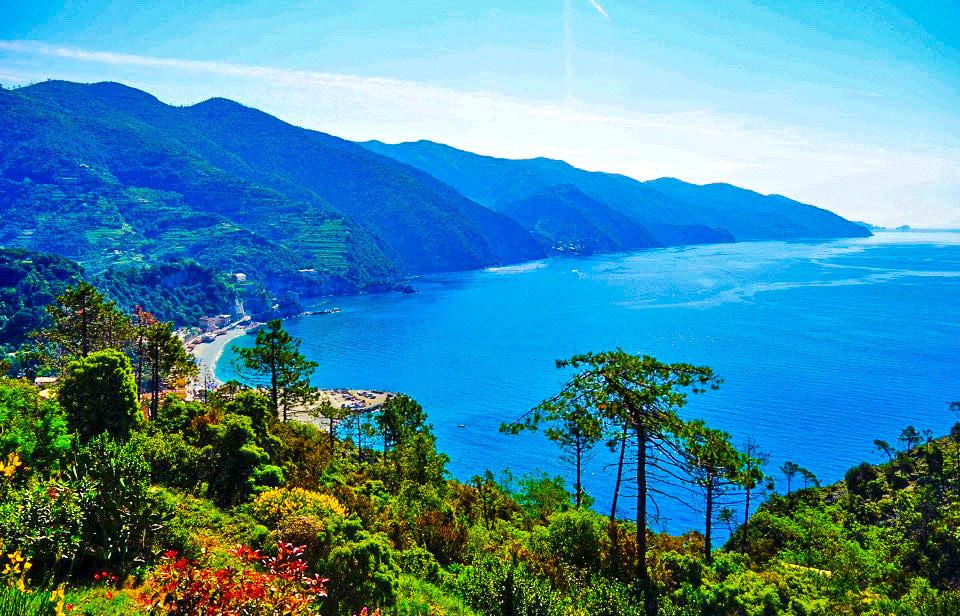
the village of Caprigliola and the town of Aulla, in Tuscany, you must pay a visit to the historic town of Sarzana, which is still one of the richest and most vital centres of the Magra valley. More generally speaking the neighboring areas of La Spezia, spread towards Lunigiana to the east and the real Tuscany, after Aulla, to the south, an area located below the Apennine mountain peaks; to the west, the coast of the Gulf of Poets is sandy, and runs

Via Corone 1
Monterosso al Mare (SP)
CINQUE TERRE
+39 0187.817502
+39 0187 817692
CITR: 011019-ALB-0010 portoroca.it portoroca@portoroca.it
PRENOTA ONLINE
SUL SITO UFFICIALE
BOOK ONLINE ON OFFICIAL WEBSITE

Incastonato nella scogliera a strapiombo sul mare, nel Parco Nazionale delle Cinque Terre, l'Hotel PORTO ROCA accoglie i suoi ospiti con una stupenda vista mozzafiato regalando la sensazione di essere in navigazione pur trovandosi a pochi passi dal centro storico di Monterosso. Tuffarsi nell'esclusiva piscina panoramica a sfioro, circondata dalla natura lussureggiante e dai vigneti, è come immergersi in un paradiso di incomparabile bellezza. Il suo ristorante, LA TERRAZZA DEL PORTO ROCA, prospiciente il porticciolo dei battelli turistici, propone una cucina di piatti regionali accompagnati da vini selezionati. Cornice ideale per una serata indimenticabile.
Nestled in the cliffs overlooking the sea, inside the National Park of the Cinque Terre, the Hotel PORTO ROCA welcomes its guests with a wonderful breathtaking view, you will feel as if you are sailing, despite being a stone's throw from the historic centre of Monterosso.
Diving into the exclusive infinity swimming pool, surrounded by lush vegetation and vineyards, losing yourself in this paradise of incomparable beauty.
The restaurant LA TERRAZZA DEL PORTO ROCA overlooking the marina with tourist boats, offers a range of regional cuisine, accompanied by selected wines. An ideal place for an unforgettable evening!



PORTO ROCA 旅館坐落在俯瞰大海的懸崖上,位於五漁村(Cinque Terre)國家公園內,以令人 驚嘆的壯麗景色迎接客人,享有海上的感覺,同時距離蒙特羅索 (Monterosso)的歷史中心僅有 幾步之遙。潛入獨特的無邊游泳池,周圍環繞著鬱鬱蔥蔥的大自然和葡萄園,就像沉浸在無與倫比的 美麗天堂中。他的餐廳
LA TERRAZZA DEL PORTO ROCA俯瞰著遊船碼頭,提供區域菜餚和精選葡萄酒。理想的 環境,讓您度過一個難忘的夜晚。

towards the peaceful and quiet Chiavari and Sestri Levante. On the Tuscan side, the area of La Spezia is fresh and lush even in summer, surprising its visitors with a rich variety of homemade cuisine, medieval towns that are still intact. Towards the west, the sea is like a master that rests in the two beautiful and quiet bays of Sestri Levante, the bay of fairy tales and the bay of Silence, two ideal places for couples and lovers of small villages by the sea.

If the variety of landscapes is not enough, remember that from La Spezia you can easily reach the National Park of the Cinque Terre and the picturesque villages of Monterosso, Vernazza, Corniglia, Manarola and Riomaggiore, lingering in the famous Via dell'Amore and along the Blue Trail.
ristorante - wellness center
L'hotel dispone di piscina esterna non riscaldata con zona idromassaggio, centro benessere SPA con sauna, bagno turco e percorso docce emozionali.
Il ristorante offre ottimi piatti di cucina locale e nazionale con menù alla carta.


The hotel has a non heated outdoor swimming pool with jacuzzi area, a wellness centre with sauna, Turkish bath and emotional showers. The restaurant offers excellent local and national cuisine dishes à la carte menu.

L'hôtel, avec une piscine extérieure non chauffée et zone d'hydromassage, un centre de bien-être SPA avec sauna, bain turc et douches émotionnelles, propose aussi un restaurant et une excellente cuisine locale et nationale avec un menu à la carte.




Ilterritorio di Lerici è situato nella riviera di Levante, sulla sponda orientale del golfo della Spezia. Sorge al centro di una insenatura naturale denominata “Golfo dei Poeti” dominata da due castelli medievali: quello di Lerici e quello di San Terenzo. Oltre al capoluogo fanno parte del territorio comunale splendide località sul mare e collinari con vista sul golfo: La Serra, Pugliola, Solaro, San Terenzo, Fiascherino, Maralunga e il caratteristico borgo di Tellaro, rinomato perché inserito nella classifica dei “Borghi più belli d’Italia”. Nel territorio del comune di Lerici si trova inoltre il Golf Club Marigola, un piccolo gioiello a pochi metri dal



Situated by the river with splendid view, 260 sqm villa on the ground floor wide entrance hall, double living area with fireplace, kitchen dining, bedroom, bathroom, cellar and portico. On the first floor hallway, four bedrooms, three bathrooms and two terraces. The property includes 400 sqm garden with parkings on the front. There is the possibility of a boat mooring.

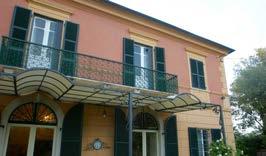
At a stone's throw from the centre of Sarzana, villa with annex, surrounded by 3000 sqm land. The villa is on two floors, plus a turret and a terrace located in the turret. The annex is on one level, on the ground floor and has a living area with kitchenette, double bedroom and bathroom. Tool shed. Luxury finishing. It is possible to purchase just one flat of the property.
mare, avvolto in una pace irreale dove poter godere di un’atmosfera familiare per uno sport all’insegna del relax. Lerici, come tutto il resto d’Italia, non è stata risparmiata dalla crisi del mercato immobiliare. L’offerta attualmente è molto ampia, si parte da soluzioni di dimensioni contenute, come mono e bilocali fino ad arrivare a ville di pregio dotate di piscina ed ogni altro comfort, ubicate soprattutto nelle zone collinari. Il calo dei prezzi ha colpito indistintamente tutte le tipologie di immobili, tuttavia, mentre le soluzioni vicine al mare, con vista e spazio esterno hanno subito un calo ridotto del 20 - 30%, il resto degli immobili ha subito un notevole crollo, talvolta anche del 4050%. Ovviamente questo è giustificato dal fatto che l’attuale richiesta è quasi esclusivamente concentrata su immobili con vista mare e un piccolo sfogo esterno, che sia una terrazza o un giardino. I prezzi vanno da un minimo di € 2.000,00 al mq ad un massimo di € 8.000,00.
(SP) Via Roma, 37


On the hills, detached house recently built with swimming pool, two storey property, on the ground floor an entrance hall, a bright double living area, kitchenette, dressing room, bathroom and closet, on the first floor we find two bedrooms and two bathrooms, in the basement another living area, a bathroom and a bedroom. Storage area for tools, cellar and portico, terrace plus 19000 sqm fenced land. Luxury finishing.


In a terraced compound, totally renovated, villa on two floors on the ground floor: entrance hall, wide living area with kitchenette, utility room and bathroom; two bedrooms and a bathroom on the first floor. The property includes a garden and a tool shed at the back.
Theterritory of Lerici is located on the Eastern riviera of the Gulf of La Spezia. It lies at the centre of a natural bay called “ the Gulf of Poets”, overlooked by the two Middle Age castles of Lerici and San Terenzo. There are other wonderful seaside villages, and hills overlooking the gulf in the territory of the administrative centre: La Serra, Pugliola, Solaro, San Terenzo, Fiascherino, Maralunga and a typical hamlet called Tellaro, a well known place, listed among the "Most beautiful hamlets of Italy”. In the territory of Lerici there is a small gem at a sto -
ne's throw from the sea, "Golf Club Marigola", located in a peaceful area where you can enjoy a family style atmosphere and practice a relaxing sport. Lerici, just like the rest of Italy, faced the real estate crisis. At present the number of properties available is quite big, you can find small properties such as studio flats or two-room flats or also valuable properties with swimming pools and all comforts, located on the hills. The decrease in prices affected all types of properties, however while the properties close to the sea, with view and an outdoor have had a decrease of 20-30%, the drop in price of the other types of estates at times was of 40-50%. All this is obviously due to the current request that regards in particular properties with sea view and a small outdoor area, either a terrace or a garden. Prices go from a minimum of € 2.000,00/sqm to a maximum of € 8.000,00/sqm.
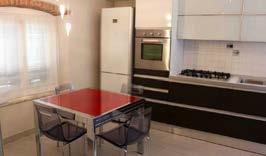

Two storey flat with entrance hall, living area, kitchen dining, double bedroom, bathroom and closet, on the upper floor two mansard rooms with comfortable hights. Perfectly renovated with modern finishing of excellent quality.


At a few kilometres from Sarzanza, studio flat recently built, situated on the ground floor with small garden. Ideal also as investment. Excellent modern finishing. Parking.


At the crossroad for Bocca di Magra - Flat on the third, top floor with entrance hall, living area with kitchenette, hallway, double bedroom, single bedroom and bathroom. The property includes a 57 sqm terrace located above the flat, equipped with electricity, water., solarium area and view of the river. Excellent finishing. Parking in the compound area. Partially furnished.
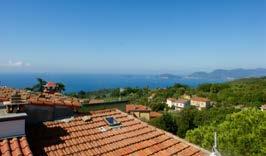

In the historic centre, tower house. On the ground floor a wide room, while on the first floor we find a living area, kitchenette, bedroom, bathroom; on the upper floor a wide terrace with splendid view of the sea and the islands.

Many are the adjectives that have descrived the Gulf of Poets over the past years.
The first one is Why is it called “of the poets”?
In 1919 the playwriter Sam Benelli described the Gulf in this way in his “La cena delle beffe”, while he was staying in his house in San Terenzo, remembering Paolo Mantegazza's words: “Lucky
you, Poet of science that rest in peace in the Gulf of Poets”
“Lucky you inhabitants of this Gulf that have found a man who will welcome worthily its visitors”.
Among the many artists, writers and painters that have stayed and were bewitched by this bay, several found inspiration for their works, enchanted by the sea, the small villages, shelte -

red and clung to the rocks, placed in a precarious location suspended between the sea and nature, they were also fascinated by the simple lifestyle;we can mention Percy Shelley, Byron, D'annunzio, Marinetti, Bocklin, David Herbert Lawrence, George Sand, many more have crossed and lived in this corner of paradise, leaving memories in their precious works.
The scenario that immediately catches the eye is that of the sea hamlets that from Portovenere and Lerici follow one another up to the town of La Spezia; the foot paths located along the coast and inland, the coves that you can see from the sea and the villages look like brush strokes of a Macchiaiolo painter, various colours, framed by a variety of vegetation that has thousands of diffe -
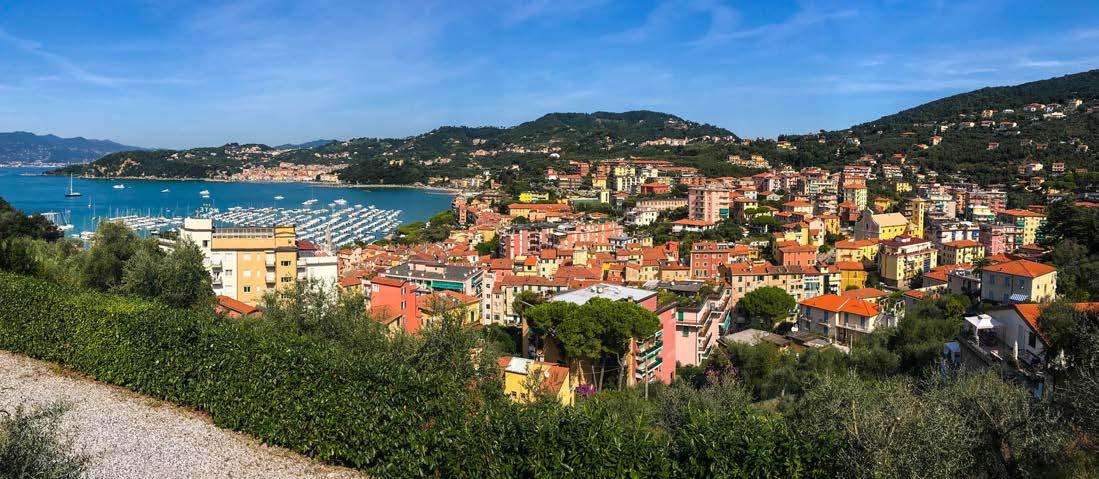
rent shades of green. An adjective that comes to our mind is “beautiful”
Only this one? Certainly not. A quality that shouldn't be omitted is “curious”.
First of all for its shape, it was thought for years that the marine wearing away had slowly damaged the synclinal basin of the boulder, a type of sandstone that is present in the territory of Manarola, Biassa and Arcola, which is used as cut stone or as coating, for its tender and crumbly features, therefore is deterio -
rable in time. The lower layers of this rock are made or harder limestone, that did not undergo wearing away and formed the inlet, This theory has been put aside in favour of the tettonic theory, according to which the Gulf and the parallel lower flow of the river Magra are rifts with Appenine course. The inner area was formed by the oscillations of the sea course on the sides, in a similar way to terracing. These are the two main theories that have developed in this respect.



Via Petriccioli 10 - Lerici (SP)
Tel. +39 0187.967121
Piazza Valtriani 1 - Lerici (SP)
Tel. +39 0187.967808











Ogni giorno la tua spesa di qualità.
Scopri i nostri prodotti a Marchio e Prodotti Tipici Regionali e del Territorio.
Orario Continuato, Aperto la Domenica
Every day your quality shopping.
Discover our brand products and typical Regional products and products of the territory.
Non stop opening hours, opened on Sunday.



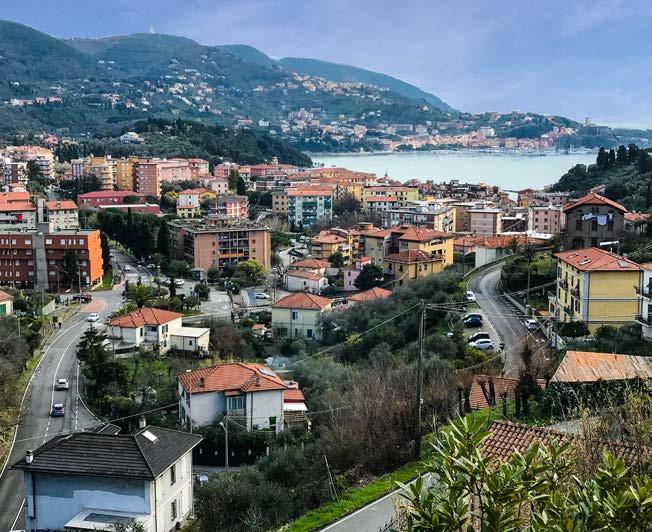
The territory located behind La Spezia follows the rocky shape of the coast , becomes then hilly; it is crossed by the main roads that come from the north and the south of Italy: via Francigena and via Aurelia. The high grounds that are side by side to the two routes become essential places for monitoring and defence, strongholds of the territory, economically and polically speaking they are crucial places, besides being a stop-over for pilgrims.
As we can see from some aerial pictures, the shape of the area makes us immediately think that the Gulf is


a suitable place for a port, however it is curious that only in the Nineteenth and Twentieth century this became one of the dominant features of the Gulf.
During the Middle Ages the coast was considered as a place with a number of difficult dockings, due to the rocks and the swampy and low sea bottom of the area of La Spezia. The position of the Gulf and its inland have always attracted important towns such as Genoa, Pisa and Lucca; these towns have fought for centuries to gain the control of these territories, mainly for defensive



Specialisti in dermocosmesi e omeopatia. Effettuiamo: servizio di prenotazione CUP; installazione e lettura holter cardiaco e pressorio 24h; misurazione pressione arteriosa; consulenza di naturopatia, fisioterapia, estetica e podologia.
Specialists in dermocosmetics and homeopathy. Our services: Blood test booking CUP, heart and pressure holter installation and monitoring 24 hrs, blood pressure measurement, naturopathy advise, physiotherapy, beautician and podology.

Via P. Mantegazza, 8/A San Terenzo (SP) Tel. +39 0187.942433
info@farmaciaghigliazza.it



reasons, and for trading salt and leathers. In the Thirteenth and Fourteenth centuries there were harsh conflicts between Genoa and Pisa, especially in the hamlets of Portovenere and Lerici, it is in this period that the strongholds started to be reinforced. The inlet of the latter was sheltered by winds such as sirocco or libeccio, for this reason it was considered excellent and safe for trading, in particular for the trade of salt. As already mentioned the area of La Spezia did not have the features of a port, but it was equipped as a military defensive stronghold, a Castrum, that was included in the defensive system of one or two of

the Ligurian or Tuscan adversaries, for its central position in the Gulf; the view of the sea is central and complete from Lerici to Portovenere. La Spezia started to gain prestige especially between the Fourteenth and the Fithteenth century; it became a Podesteria with Carpena,
appointed to perform administrative and executive tasks of control, police and jurisdicial powers, with its own castle, San Giorgio's castle, its town walls followed the actual via Biassa, part of via Colombo, via Sapro and via San Giovanni. Different sources describe
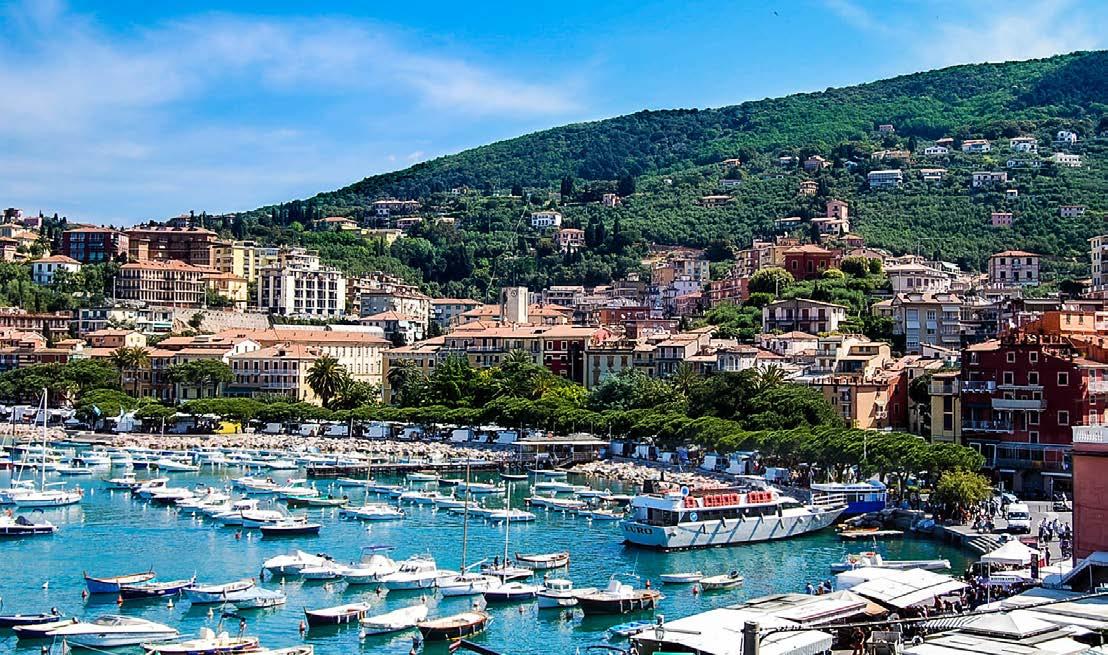

the town as a well organized place as regards trading and polically speaking, with statutes and rules in different sectors, but also in terms of behaviour(it seems that there were many casinos!).
Between the Fithteenth and the Seventeenth centuries, the villages of Lerici and Portovenre kept their function as strongholds, while the town of La Spezia started to be reconsidered, in fact the inland roads of Termo with Sarzana, via Aurelia with Lerici, the route to Parma were improved. The idea was to enable the town to be a free port with
no excise duties or payments, however the authority of Genoa impeded this project. Between the Seventeenth and the Eighteenth centuries Genoa and the territories under its authority became part of Napoleon's French domination, the decree dated 11th May 1808 established that La Spezia would have become a military port and one of the districts of the Appenine Department, together with Chiavari, Sarzana and Pontremoli. The best French military and naval engineers were asked to come here and inspect the coast, the

territory, the winds, the routes, the type of soils and issue reports and projects in order to identify the most suitable location for the port, and develop around this area a road nework suitable for trading, for military ships and civil use, to upgrade the whole district of the Gulf.
The most suitable location seemed to be the bay of Le Grazie and Panigaglia, to be propt up by La Spezia, but its services had to be increased. However all the


projects proposed or examined were too expensive and difficult to achieve. Portovenere, Lerici and the nearby villages maintained the characteristics of seaside hamlets, their castles had defensive purposes and sometimes were used also as prisons, however they did not undergo important renovations. In this period writers and poets started coming to visit the area. The tranquilli-
ty of the place, its mild climate and the historic period that prevented these areas from becoming war fields, as it had been in the past, made these places ideal for pleasant holidays.
In 1813 with the battle of Leipzig Napoleon's French Empire ended. Two years later La Spezia became the seat of the of the eastern Province intendency, which controlled the area from Portofino di Sarzana, by Royal edict dated 27th February. Despite having improved the road network, the public lighting and services, La Spezia was still far from being considered as an industrial area.
The Savoy government reconsidered the reports issued by Napoleon's engineers for the creation of a military port, on one hand continuing to check the feasibility of the projects and on the other hand starting to invest in the development of the town.
Equipping the inhabited area that was able to gather the community in order


to increase culture, was not only a passage in the history of the town, but was part of a much wider project at National level, in fact it is in the Nineteenth century that we can see the birth of a national unity, and the value of the whole Italy in comparison to the other European powers.
Between the Eighteenth and Nineteenth century the whole Europe was influenced by the rise and fall of Napoleon's empire and by the mapping out of the new territorial borders of the individual nations. The sense of belonging, of searching civil identities im -


plies looking back at the past, to retrace, study and enhance our own origins, from a political, cultural and artistic point of view in its entirety. The Italian Risorgimento developed and corresponded to the same period of the unification of the Kingdom of Italy, which brought back classicism for its perfection, but also the magnificence of the Middle Ages and most of all of the Reinassance period, as other examples of the Italian culture, true symbols of its potentiality and statements of its rational human capacities.
It is for these reasons that in these centuries Italy was one of the main and favourite places of the so called “Grand Tour”, writers, poets, painters and musicians travelled along the peninsula, visiting its most famous towns Rome, Venice, Naples that tapped into its culturale heritage and its landscape. This small stretch of Liguria started a new life, influenced by all these components and became the “Gulf of Poets”. Coming back to earth.... and looking at the carthography produced from 1851

to 1870 we find out that the pro French proposals for placing a military port in the area of Le Grazie were set aside, in virtue of the vision of a Minister of the Kingdom called Camillo Benso Cavour, and Domenico Chiodo; the interest for a strategic military centre was focused on La Spezia: the Arsenal was strongly wanted and built in a short time, following a project that finalised methods for excavating docks and basins that had never been seen in the rest of Italy. The town expanded its borders to wel-
come all the workers employed to build the military areas, as well as their families, not only for the time necessary to complete the works but permanently. In fact the population tripled between 1851 and 1891. In the 1870s with Saint Bon as Minister of the Navy, there was a proposal for lodgings, however it went up in flames. The goverment found a solution to the matter in 1884, the year when cholera spread in Varignano. Some council estates were built, with great difficulties between 1885 and

1889, in Quartiere Umbertino; they were equipped with minimum facilities, however this meant a permanent home for the workers. La Spezia started to expand also in Migliarina and San Bartolomeo, two quarters that were built outside the town walls and were now included in the growing urban layout, trying at the same time to keep a relationship with the historic centre and the new rearrangment. The shipyards in Muggiano were built, while the military areas were increased. In the 80s of the Nineteenth century
another project took shape along with the one referred to the contruction of the Arsenal: the idea of creating a mercantile port. In fact in May 1883 the Town Hall assigned the design of the area to a Commission of the civil engineering department. Two proposals were submitted and after the choice, the works started in 1891 and finished in 1900. In the following decade there were already extensions to the project planned by the Royal Commission. I believe that another adjective suitable

for the Gulf of Poets is “interesting”, for how it has developed over the centuries; from a buch of small and difficult marinas, strongholds, places of continuous raids from Genoa and Pisa for the supremacy of their power, it has become an important centre of the political and economical plan of the emerging Italian State.
The villages of Portovenere and Lerici and the other nearby villages, did not exapand but they kept their distinctive features of fishing villages, and the
appeal of the places. The town of La Spezia, was a hamlet that had in some ways similar origins to the other villages, however it was less fortunate due to the swampy areas, its location, its natural features and its history, but it was able to expand and grow, reinventing itself and becoming a “town”, differentiating its resources, not only as a military port but also as a mercantile port.
From an architectural point of view La Spezia has kept a traditional look, many buildings bear pleasant decorative fea -
tures of the Middle Ages or of Classical culture, rearranged according to an ecletic taste, that was quite common in the second half of the Ninenteenth and Twentieth century. Innovation was mostly in terms of potentiality. The so called “new”buildings are the Liberty building of the Music Conservatory, which is rich in paintings, chanderliers and wall lights, or in Deco style we find the building Franco Oliva, that is the headquarters of the Province, the Civic Theatre, and Cozzani Theatre, just to mention a few examples. In the first half of the Twentieth century the town could still benefit of its strategic role, improved the facilities of the port, the road network, and established the location of the main hospital along via Veneto, after years
of relocations in convents, that since the abolition of the religious orders by Napoleon, had become a shelter for sick people and even prisons. The conditions of the new areas was improved in the quarters of Migliarina and Viale Umberto I, later renamed Viale Italia. The engineering sector developed, the factory Vaccari opened its premises, and the oyster farmers created a consortium.
Many more artists dwelled in the Gulf, now known as the Gulf of the Poets; evidence can be found in the mosaics made by Enrico Prampolini and Fillia, that are inside the tower of Palazzo delle Poste, the mosaics belong to the futurism movement that had its main interpretation in the dynamism, and saw the quick industrial development


of La Spezia as an example of the time, and at the same time as the power of progress.
Unfortunately during the two World Wars the strategic position that made the town grow and develop, was also the reason why La Spezia was bombed; however the town defended and was able to recover great part of its artistic heritage without losing its identity. In
the second half of the Nineteenth century up to the present days, the town continued to develop the mercantile port, following regulations, planning, civil and commercial traffic, while the functions of the military port slowly decresed thanks to the prolonged peaceful period.
The populated areas expanded, while the historic centre was improved,
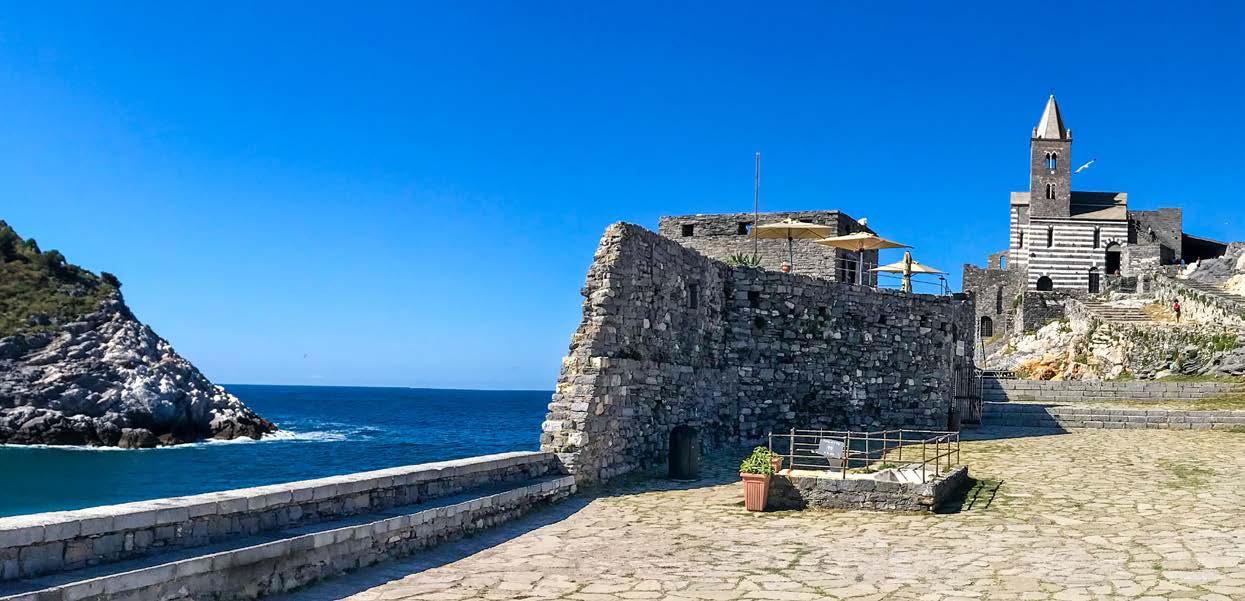
however there was still a lot to do.
The Gulf of Poets refers mainly to its two main villages, Portovenere and Lerici and quite often also the Cinque Terre are included, excluding La Spezia, as if they were separated from one another, it's such a shame.
Tourism is obviously not the same as it was in the Eighteenth and Nineteenth century, it is
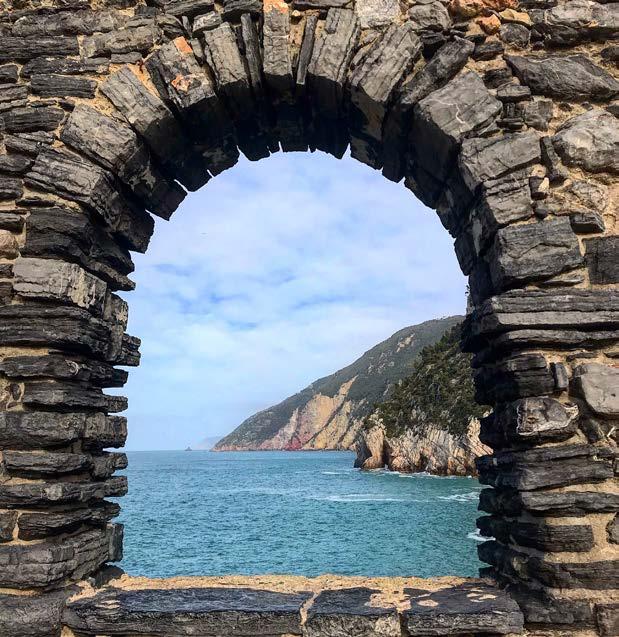
more typically referred tothe villages and just crosses the town.
Writer such as Montale found in the villages of the eastern coast, the necessary peace to write his works, that is how the tradition of the “Gulf of Poets” continued.
In the last fifty years important steps have been made in terms of culture of the territory, and in many other sectors. The historic centres have been closed to the traffic, allowing the stroll in the town centre and improving the quality of life; the castles in Portovenere, Lerici and San Giorgio castles have been renovated and have become the premises of cultural venues used for exhibitions and/or art collections; the quality and kind of “museums” have increased in the district.

The collection inside the castle in Lerici is particular, the rooms of the fortress host life size reconstructions of dinosaurs and prehistoric finds, that were found in the area. This museum is not only a journey into the imaginery world or a children's museum, but a study place for experts of the sector.
The castle in San Terenzo has been renovated and now is open to the public. The museum in La Spezia hosts the archeological sector of the Stele Statues of Museo Formentini, antropomorphic sandstone statues that date back to the Bronze and Iron age, that were found In Lunigiana and while excava -

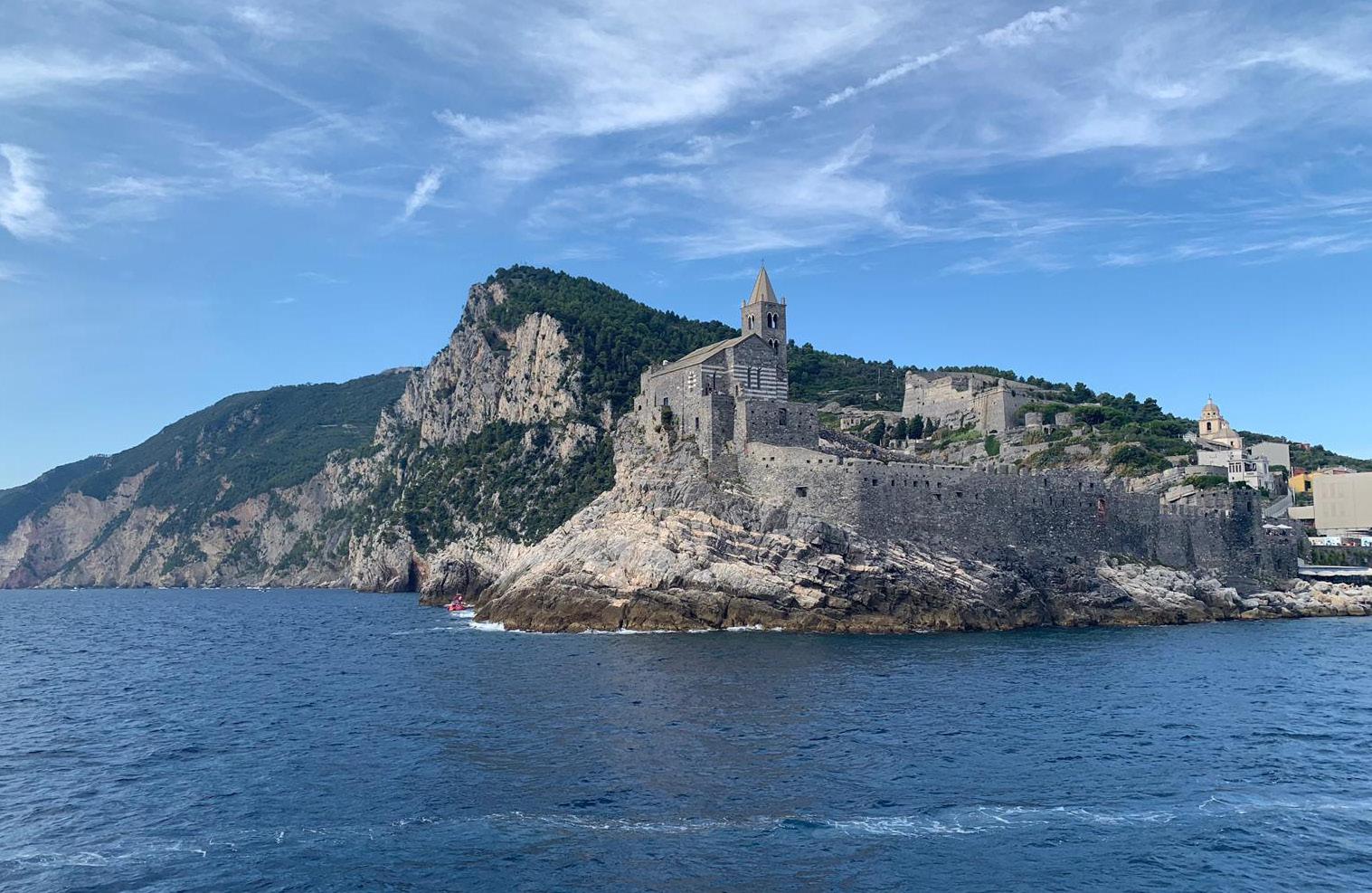
ting in the ancient port of Luni. The former Oratory of San Bernardino, located in Via del Prione, hosts the Museo Etnografico and the Museo Diocesiano in the new renovated rooms, while inside the Arsenal we find one of the best museums of Italy, the Naval Museum.
This heritage in terms of what is exhibited and also the buildings that host these treasures, that were renovated and opened to the public, make this Gulf of Poets more charming. We don't ljust ook back at the past of the territory, but we go further. In the late 90s of the Nineteenth century a private citizen donated to the Town a huge art collection, this lead to the renovation of the former complex of San Francesco da Paola Friars convent that is located in via del Prione, the building
dates back to the Seventeenth century and was modified in the following centuries, when the religious orders were abolished by Napoleon, it became the headquarters of the Hygene offices. This is an unexpected collection. There are ivory objects, reliques, jewels, statues of the Middle Ages, handscrips, statues of the Middle Ages, classical statues and Reinassance statues, wooden tiles of the Middle Ages, paintings of the Fourtteenth century by well known representative Italian artists, all well kept by Amedeo Lia, who had bought them during his life, as he loved art in all its forms, all these treasures are now displayed in the Museum Lia, available to everyone. Federico Zeri, described this collection as one of the most important collections of Europe and with great pride he could say that
it was placed in his town! However this is not all about it. In 2000 other rooms were renovated and arranged to host another and particular collection, a less known kind of art, that thanks to the passion of a couple Lilian and Euro Capellini we can now admire: the seals. It is a new, suprising museum that has been defined by many critics and art experts as unique for the number and type of seals present. These two museums are equal to the collection Poldi Pezzoli in Milan or other private collections by art lovers, they remind us of wunderkammer, the so called rooms of wonders, that were so popular from the Middle Ages up to the Seventeenth century. We finish talking about museums mentioning the CAMEC, the museum of Contemporary Art, that hosts the collection by another weal-
thy citizen Cozzani, fascinated by contemporary local art and non. We must not forget that among the artists that have stayed in town, many have exhibited their works on the small, however prestigious art galleries of the town.
The variety offered by the museums is huge considering that the town is quite small and the Gulf has only been taken into consideration for its outstanding natural beauties. It is peculiar that an industrial urban context whose main activies refer to logistics, mercantile activies, the port, the factories has such sensitive feelings towards art, not just in terms of sculpture, paintings, or architecture but is interested also in minor forms of art. I could add another adjective to the list to describe and distinguish “the Gulf of Poets”, that is stimulating.


This leads me to other thoughts, not only beauty characterises this corner of Liguria but also its history. Reflecting makes me think of another adjective that is “fascinating”, and helps me to conclude my thoughts, however I hope that it will stimulate the readers to think about their own and different adjectives, while visiting these places, reading about the history, strolling down town, living and why not tasting some good food,
or while swimming in its wonderful sea. The different ways of approaching this matter are so many, the important thing is that while visiting the Gulf of Poets, as well as the rest of Italy, we don't just stop at our first impression, bu we go further, observing and reading about it. It doesn't make any sense staying or choosing a place to live if we don't know more about it.
Valentina Bruchi










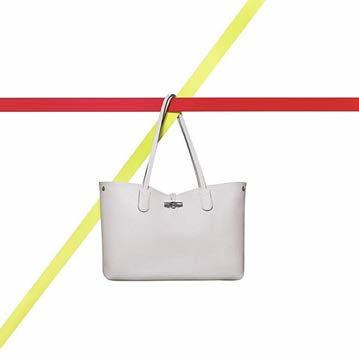
Authorized Dealer











